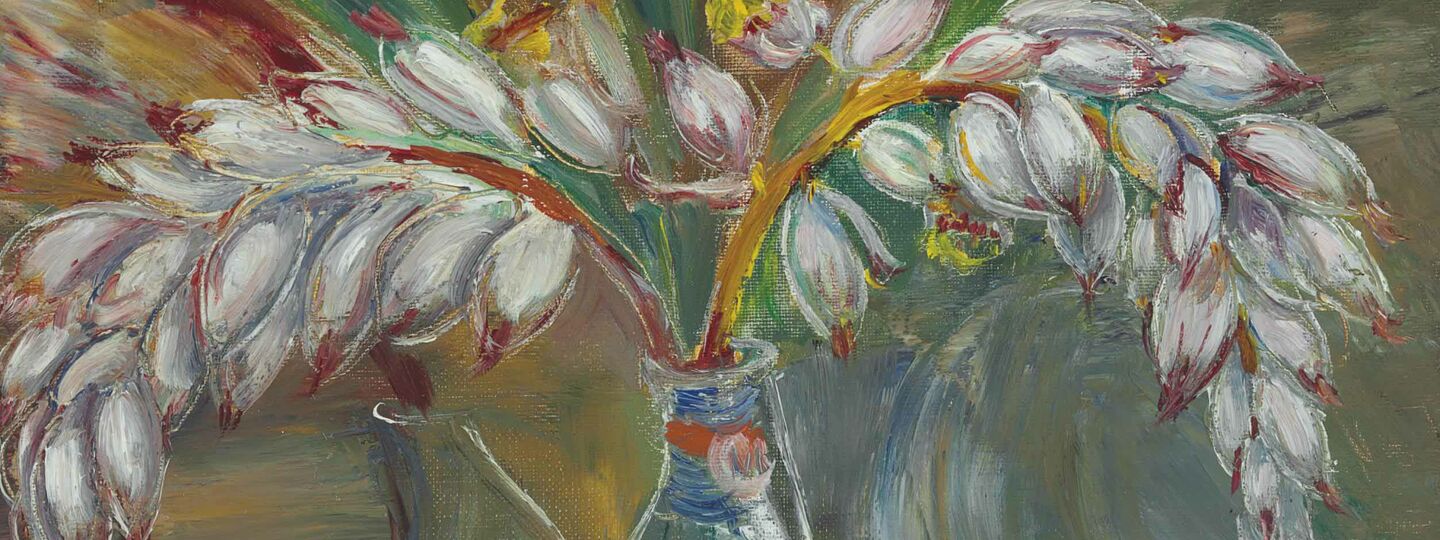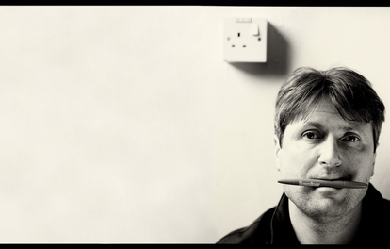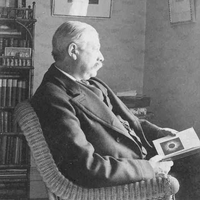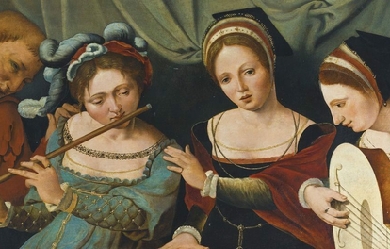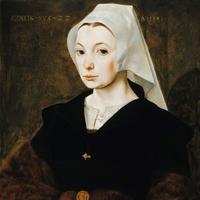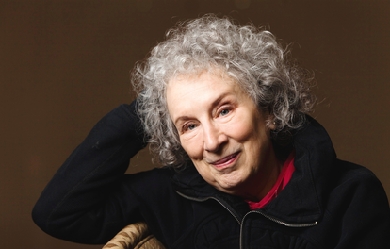
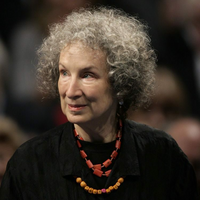
Margaret Eleanor Atwood (born November 18, 1939) is a Canadian poet, novelist, literary critic, essayist, teacher, environmental activist, and inventor. Since 1961, she has published 18 books of poetry, 18 novels, 11 books of non-fiction, nine collections of short fiction, eight children's books, and two graphic novels, and a number of small press editions of both poetry and fiction. Atwood has won numerous awards and honors for her writing, including two Booker Prizes, the Arthur C. Clarke Award, the Governor General's Award, the Franz Kafka Prize, Princess of Asturias Awards, and the National Book Critics and PEN Center USA Lifetime Achievement Awards. A number of her works have been adapted for film and television.

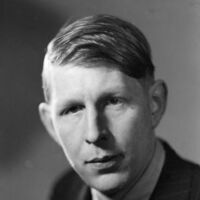
Wystan Hugh Auden (21 February 1907 – 29 September 1973), who published as W. H. Auden, was an Anglo-American poet, born in England, later an American citizen, regarded by many as one of the greatest writers of the 20th century. His work is noted for its stylistic and technical achievements, its engagement with moral and political issues, and its variety of tone, form and content. The central themes of his poetry are love, politics and citizenship, religion and morals, and the relationship between unique human beings and the anonymous, impersonal world of nature. Auden grew up in Birmingham in a professional middle class family and read English literature at Christ Church, Oxford. His early poems, written in the late 1920s and early 1930s, alternated between telegraphic modern styles and fluent traditional ones, were written in an intense and dramatic tone, and established his reputation as a left-wing political poet and prophet. He became uncomfortable in this role in the later 1930s, and abandoned it after he moved to the United States in 1939, where he became an American citizen in 1946. His poems in the 1940s explored religious and ethical themes in a less dramatic manner than his earlier works, but still combined traditional forms and styles with new forms devised by Auden himself. In the 1950s and 1960s many of his poems focused on the ways in which words revealed and concealed emotions, and he took a particular interest in writing opera librettos, a form ideally suited to direct expression of strong feelings.
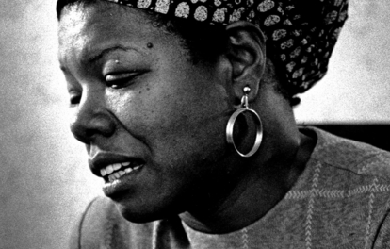
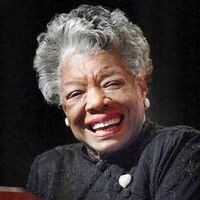
Maya Angelou (born Marguerite Ann Johnson; April 4, 1928 – May 28, 2014) was an American author and poet. She published seven autobiographies, three books of essays, and several books of poetry, and is credited with a list of plays, movies, and television shows spanning more than fifty years. She received dozens of awards and over thirty honorary doctoral degrees. Angelou is best known for her series of seven autobiographies, which focus on her childhood and early adult experiences. The first, I Know Why the Caged Bird Sings (1969), tells of her life up to the age of seventeen, and brought her international recognition and acclaim. Angelou's long list of occupations has included pimp, prostitute, night-club dancer and performer, cast-member of the musical Porgy and Bess, coordinator for Martin Luther King, Jr.'s Southern Christian Leadership Conference, author, journalist in Egypt and Ghana during the days of decolonization, and actor, writer, director, and producer of plays, movies, and public television programs.
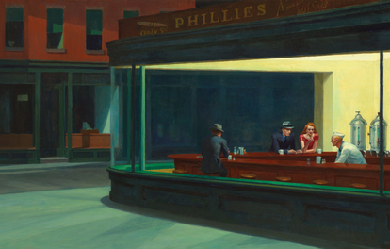
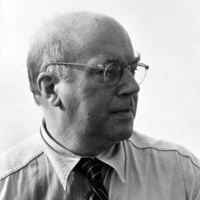
Conrad Potter Aiken (August 5, 1889– August 17, 1973) was an American writer, whose work includes poetry, short stories, novels, a play, and an autobiography. Aiken was the son of wealthy, socially prominent New Englanders, William Ford and Anna (Potter) Aiken, who had moved to Savannah, Georgia, where his father became a respected physician and brain surgeon. Then something happened for which, as Aiken later said, no one could ever find a reason. Without warning or apparent cause, his father became increasingly irascible, unpredictable, and violent. Finally, early in the morning of February 27, 1901, he murdered his wife and shot himself. According to his own writings, Aiken (who was eleven years old) heard the gunshots and discovered the bodies. He was then raised by his great aunt in Massachusetts and was educated at private schools and at Middlesex School in Concord, Massachusetts, then at Harvard University where he edited the Advocate with T. S. Eliot, who became a lifelong friend and associate.
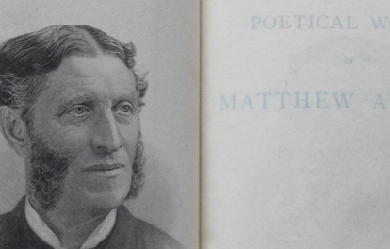
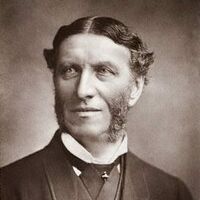
Although remembered now for his elegantly argued critical essays, Matthew Arnold (1822-1888) began his career as a poet, winning early recognition as a student at the Rugby School where his father, Thomas Arnold, had earned national acclaim as a strict and innovative headmaster. Arnold also studied at Balliol College, Oxford University. In 1844, after completing his undergraduate degree at Oxford, he returned to Rugby as a teacher of classics. After marrying in 1851, Arnold began work as a government school inspector, a grueling position which nonetheless afforded him the opportunity to travel throughout England and the Continent. Throughout his thirty-five years in this position Arnold developed an interest in education, an interest which fed into both his critical works and his poetry. Empedocles on Etna (1852) and Poems (1853) established Arnold's reputation as a poet and in 1857 he was offered a position, which he accepted and held until 1867, as Professor of Poetry at Oxford. Arnold became the first professor to lecture in English rather than Latin. During this time Arnold wrote the bulk of his most famous critical works, Essays in Criticism (1865) and Culture and Anarchy (1869), in which he sets forth ideas that greatly reflect the predominant values of the Victorian era. Meditative and rhetorical, Arnold's poetry often wrestles with problems of psychological isolation. In "To Marguerite—Continued," for example, Arnold revises Donne's assertion that "No man is an island," suggesting that we "mortals" are indeed "in the sea of life enisled." Other well-known poems, such as "Dover Beach," link the problem of isolation with what Arnold saw as the dwindling faith of his time. Despite his own religious doubts, a source of great anxiety for him, in several essays Arnold sought to establish the essential truth of Christianity. His most influential essays, however, were those on literary topics. In "The Function of Criticism" (1865) and "The Study of Poetry" (1880) Arnold called for a new epic poetry: a poetry that would address the moral needs of his readers, "to animate and ennoble them." Arnold's arguments, for a renewed religious faith and an adoption of classical aesthetics and morals, are particularly representative of mainstream Victorian intellectual concerns. His approach—his gentlemanly and subtle style—to these issues, however, established criticism as an art form, and has influenced almost every major English critic since, including T. S. Eliot, Lionel Trilling, and Harold Bloom. Though perhaps less obvious, the tremendous influence of his poetry, which addresses the poet's most innermost feelings with complete transparency, can easily be seen in writers as different from each other as W. B. Yeats, James Wright, Sylvia Plath, and Sharon Olds. Late in life, in 1883 and 1886, Arnold made two lecturing tours of the United States. Matthew Arnold died in Liverpool in 1888. A Selected Bibliography Poetry A Matthew Arnold Birthday Book (1883) Alaric at Rome: A Prize Poem (1840) Cromwell: A Prize Poem (1843) Empedocles on Etna and Other Poems (1852) Empedocles on Etna: A Dramatic Poem (1900) Merope: A Tragedy (1858) New Poems (1867) Poems: A New Edition (1853) Poems: Second Series (1855) The Poems of Matthew Arnold (1965) The Poetical Works of Matthew Arnold (1950) The Strayed Reveller and Other Poems (1849) The Works of Matthew Arnold (1903) Prose Essays, Letters, and Reviews by Matthew Arnold Essays, Letters, and Reviews by Matthew Arnold (1960) Friendship's Garland (1883) "Charles Augustin Sainte-Beuve," in Encyclopedia Britannica, ninth edition, IX: 162-165 (1886) "Isaiah of Jerusalem" in the Authorized English Version, with an Introduction, Corrections and Notes (1883) "Schools," in The Reign of Queen Victoria (1887) A Bible-Reading for Schools: The Great Prophecy of Israel's Restoration (1872) A French Eton; or, Middle Class Education and the State (1864) Arnold as Dramatic Critic (1903) Civilization in the United States: First and Last Impressions of America (1888) Complete Prose Works (1960) Culture and Anarchy (1883) Culture and Anarchy: An Essay in Political and Social Criticism (1869) Culture and the State (1965) Discourses in America (1885) Education Department (1886) England and the Italian Question (1859) England and the Italian Question, (1953) Essays in Criticism (1865) Essays in Criticism: Second Series (1888) Essays in Criticism: Third Series (1910) Five Uncollected Essays of Matthew Arnold (1953) General Grant, with a Rejoinder by Mark Twain (1966) General Grant: An Estimate (1887) God and the Bible: A Review of Objections to "Literature and Dogma" (1875) Heinrich Heine (1863) Higher Schools and Universities in Germany (1874) Irish Essays, and Others (1882) Isaiah XLLXVI; with the Shorter Prophecies Allied to It (1875) Last Essays on Church and Religion (1877) Letters of Matthew Arnold, 1848-1888 (1895) Letters of an Old Playgoer (1919) Letters, Speeches and Tracts on Irish Affairs by Edmund Burke (1881) Literature and Dogma: An Essay towards a Better Apprehension of the Bible (1873) Matthew Arnold's Letters: A Descriptive Checklist (1968) Matthew Arnold's Notebooks (1902) Mixed Essays (1879) On Home Rule for Ireland: Two Letters to "The Times" (1891) On Translating Homer: Last Words: A Lecture Given at Oxford (1862) On Translating Homer: Three Lectures Given at Oxford (1861) On the Modern Element in Literature (1869) On the Study of Celtic Literature (1883) Poems of Wordsworth (1879) Poetry of Byron (1881) Reports on Elementary Schools 1852-1882 (1889) Schools and Universities on the Continent (1867) St. Paul and Protestantism; with an Introduction on Puritanism and the Church of England (1883) The Hundred Greatest Men: Portraits of the One Hundred Greatest Men of History (1879) The Letters of Matthew Arnold to Arthur Hugh Clough (1932) The Note-Books of Matthew Arnold (1952) The Popular Education of France, with Notices of That of Holland and Switzerland (1861) The Six Chief Lives from Johnson's "Lives of the Poets," with Macaulay's "Life of Johnson," (1878) The Study of Poetry (1880) Thoughts on Education Chosen From the Writings of Matthew Arnold (1912) Unpublished Letters of Matthew Arnold (1923) References Poets.org - www.poets.org/poet.php/prmPID/88
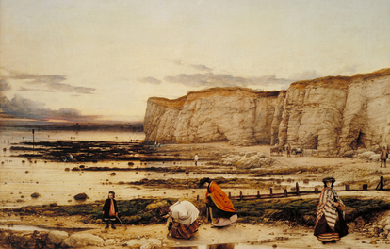
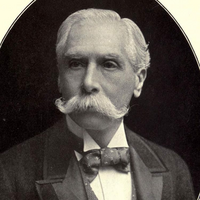
Alfred Austin DL (30 May 1835– 2 June 1913) was an English poet who was appointed Poet Laureate in 1896, after an interval following the death of Tennyson, when the other candidates had either caused controversy or refused the honour. It was claimed that he was being rewarded for his support for the Conservative leader Lord Salisbury in the General Election of 1895. Austin’s poems are little-remembered today, his most popular work being prose idylls celebrating nature.
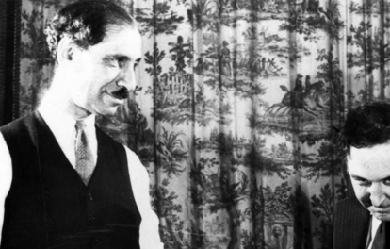
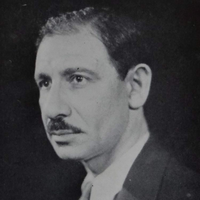
Franklin Pierce Adams (November 15, 1881– March 23, 1960) was an American columnist, well known by his initials F.P.A., and wit, best known for his newspaper column, “The Conning Tower”, and his appearances as a regular panelist on radio’s Information Please. A prolific writer of light verse, he was a member of the Algonquin Round Table of the 1920s and 1930s. New York newspaper columnist Adams was born Franklin Leopold Adams to Moses and Clara Schlossberg Adams in Chicago on November 15, 1881. He changed his middle name to “Pierce” when he had a Jewish confirmation ceremony at age 13. Adams graduated from the Armour Scientific Academy (now Illinois Institute of Technology) in 1899, attended the University of Michigan for one year and worked in insurance for three years. Signing on with the Chicago Journal in 1903, he wrote a sports column and then a humor column, “A Little about Everything”. The following year he moved to the New York Evening Mail, where he worked from 1904 to 1913 and began his column, then called “Always in Good Humor”, which used reader contributions. During his time on the Evening Mail, Adams wrote what remains his best known work, the poem Baseball’s Sad Lexicon, a tribute to the Chicago Cubs double play combination of “Tinker to Evers to Chance”. In 1911, he added a second column, a parody of Samuel Pepys’s Diary, with notes drawn from F.P.A.'s personal experiences. In 1914, he moved his column to the New-York Tribune, where it was famously retitled The Conning Tower and was considered to be “the pinnacle of verbal wit”. During World War I, Adams was in the U.S. Army, serving in military intelligence and also writing a column, “The Listening Post”, for Stars and Stripes editor Harold Ross. After the war, the so-called “comma-hunter of Park Row” (for his knowledge of the language) returned to New York and the Tribune. He moved to the New York World in 1922, and his column appeared there until the paper merged with the inferior New York Telegram in 1931. He returned to his old paper, by then called the New York Herald Tribune, until 1937, and finally moved to the New York Post, where he ended his column in September 1941. During its long run, “The Conning Tower” featured contributions from such writers as Robert Benchley, Edna Ferber, Moss Hart, George S. Kaufman, Edna St. Vincent Millay, John O’Hara, Dorothy Parker and Deems Taylor. Having one’s work published in “The Conning Tower” was enough to launch a career, as in the case of Dorothy Parker and James Thurber. Parker quipped, “He raised me from a couplet.” Parker dedicated her 1936 publication of collected poems, Not So Deep as a Well, to F.P.A. Many of the poems in that collection were originally published in “The Conning Tower”. Much later, the writer E. B. White freely admitted his sense of awe: "I used to walk quickly past the house in West 13th Street between Sixth and Seventh where F.P.A. lived, and the block seemed to tremble under my feet—the way Park Avenue trembles when a train leaves Grand Central.” Adams is credited with coining the term “aptronym” for last names that fit a person’s career or job title, although it was later refined to “aptonym” by Frank Nuessel in 1992. Satires No Sirree!, staged for one night only in April 1922, was a take-off of a then-popular European touring revue called La Chauve-Souris directed by Nikita Balieff. Robert Benchley is often credited as the first person to suggest the parody of Balieff’s group. No Sirree! had its genesis at the studio of Neysa McMein, which served as something of a salon for Round Tablers away from the Algonquin. Acts included: “Opening Chorus” featuring Woollcott, Toohey, Kaufman, Connelly, Adams, and Benchley with violinist Jascha Heifetz providing offstage, off-key accompaniment; “He Who Gets Flapped,” a musical number featuring the song “The Everlastin’ Ingenue Blues” written by Dorothy Parker and performed by Robert Sherwood accompanied by “chorus girls” including Tallulah Bankhead, Helen Hayes, Ruth Gillmore, Lenore Ulric, and Mary Brandon; “Zowie, or the Curse of an Akins Heart”; “The Greasy Hag, an O’Neill Play in One Act” with Kaufman, Connelly and Woollcott; and “Mr. Whim Passes By - An A. A. Milne Play.” F.P.A. often included parodies in his column. His satire of Edgar Allan Poe’s poem “Annabel Lee” was later collected in his book Something Else Again (1910): Soul Bride Oddly Dead in Queer Death Pact High-Born Kinsman Abducts Girl from Poet-Lover—Flu Said to Be Cause of Death—Grand Jury to Probe Annabel L. Poe of 1834½ 3rd Ave., the beautiful young fiancee of Edmund Allyn Poe, a magazine writer from the South, was found dead early this morning on the beach off E. 8th Street. Poe seemed prostrated and, questioned by the police, said that one of her aristocratic relatives had taken her to the “seashore,” but that the cold winds had given her “flu,” from which she never “rallied.” Detectives at work on the case believe, they say, that there was a suicide compact between the Poes and that Poe also intended to do away with himself. He refused to leave the spot where the woman’s body had been found. Radio As a panelist on radio’s Information Please (1938–48), he was the designated expert on poetry, old barroom songs and Gilbert and Sullivan, which he always referred to as Sullivan and Gilbert. A running joke on the show was that his stock answer for quotes that he didn’t know was that Shakespeare was the author. (Perhaps that was a running gag: Information Please’s creator/producer Dan Golenpaul auditioned Adams for the job with a series of sample questions, starting with: “Who was the Merchant of Venice?” Adams: “Antonio.” Golenpaul: “Most people would say ‘Shylock.’” Adams: “Not in my circle.”) John Kieran was the real Shakespearean expert and could quote from his works at length. A translator of Horace and other classical authors, F.P.A. also collaborated with O. Henry on Lo, a musical comedy. Film portrayal Adams was portrayed by the actor Chip Zien in the film Mrs. Parker and the Vicious Circle (1994). Bibliography Books * His books include In Cupid’s Court (1902), Tobogganning on Parnassus (1911), In Other Words (1912) and Answer This One (a 1927 trivia book with Harry Hansen). The two-volume The Diary of Our Own Samuel Pepys, collected from his newspaper columns, was published in 1935 by Simon and Schuster. The Melancholy Lute (1936) featured Adams’ selections from three decades of his work. Articles * F. P. A. (February 21, 1925). “Short-story scenarios”. The New Yorker. 1 (1): 19. * (October 9, 1926). “A day in the courts”. The New Yorker. 2 (41): 29. * (March 5, 1927). “Grant”. The Talk of the Town. The New Yorker. 3 (10): 20. * F. P. A.; Harold Ross; James Thurber (April 30, 1927). “Mot”. The Talk of the Town. The New Yorker. 3 (18): 19. * F. P. A.; E. B. White (April 7, 1927). “Another”. The Talk of the Town. The New Yorker. 3 (19): 19. Quotes * “I find that a great part of the information I have was acquired by looking up something and finding something else on the way.” * “To err is human; to forgive, infrequent.” * “Elections are won by men and women chiefly because most people vote against somebody rather than for somebody.” References Wikipedia—https://en.wikipedia.org/wiki/Franklin_Pierce_Adams
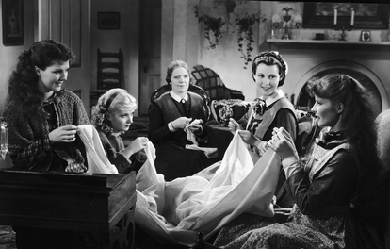
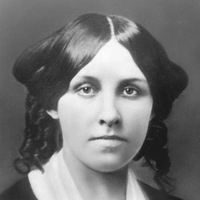
Louisa May Alcott (November 29, 1832 – March 6, 1888) was an American novelist and poet best known as the author of the novel Little Women (1868) and its sequels Little Men (1871) and Jo’s Boys (1886). Raised by her transcendentalist parents, Abigail May and Amos Bronson Alcott in New England, she grew up among many of the well-known intellectuals of the day such as Ralph Waldo Emerson, Nathaniel Hawthorne, and Henry David Thoreau.

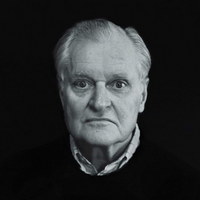
John Lawrence Ashbery (born July 28, 1927) is an American poet. He has published more than twenty volumes of poetry and won nearly every major American award for poetry, including a Pulitzer Prize in 1976 for his collection Self-Portrait in a Convex Mirror. Renowned for its postmodern complexity and opacity, Ashbery's work still proves controversial. Ashbery has stated that he wishes his work to be accessible to as many people as possible, and not to be a private dialogue with himself. At the same time, he once joked that some critics still view him as "a harebrained, homegrown surrealist whose poetry defies even the rules and logic of Surrealism." Langdon Hammer, chairman of the English Department at Yale University, wrote in 2008, "No figure looms so large in American poetry over the past 50 years as John Ashbery" and "No American poet has had a larger, more diverse vocabulary, not Whitman, not Pound." Stephen Burt, a poet and Harvard professor of English, has compared Ashbery to T. S. Eliot, calling Ashbery "the last figure whom half the English-language poets alive thought a great model, and the other half thought incomprehensible". Life Ashbery was born in Rochester, New York, the son of Helen (née Lawrence), a biology teacher, and Chester Frederick Ashbery, a farmer. He was raised on a farm near Lake Ontario; his brother died when they were children. Ashbery was educated at Deerfield Academy, an all-boys school, where he read such poets as W. H. Auden and Dylan Thomas and began writing poetry. Two of his poems were published in Poetry magazine under the name of a classmate who had submitted them without Ashbery's knowledge or permission. Ashbery also published a handful of poems, including a sonnet about his frustrated love for a fellow student, and a piece of short fiction in the school newspaper, the Deerfield Scroll. His first ambition was to be a painter. From the age of 11 until he was 15 Ashbery took weekly classes at the art museum in Rochester. Ashbery at a 2007 tribute to W.H. Auden at Cooper Union in New York City. Ashbery graduated in 1949 with an A.B., cum laude, from Harvard College, where he was a member of the Harvard Advocate, the university's literary magazine, and the Signet Society. He wrote his senior thesis on the poetry of W. H. Auden. At Harvard he befriended fellow writers Kenneth Koch, Barbara Epstein, V. R. Lang, Frank O'Hara and Edward Gorey, and was a classmate of Robert Creeley, Robert Bly and Peter Davison. Ashbery went on to study briefly at New York University, and received an M.A. from Columbia in 1951. After working as a copywriter in New York from 1951 to 1955, from the mid-1950s, when he received a Fulbright Fellowship, through 1965, Ashbery lived in France. He was an editor of the 12 issues of Art and Literature (1964–67) and the New Poetry issue of Harry Mathews' Locus Solus (# 3/4; 1962). To make ends meet he translated French murder mysteries, served as the art editor for the European edition of the New York Herald Tribune and was an art critic for Art International (1960–65) and a Paris correspondent for Art News (1963–66), when Thomas Hess took over as editor. During this period he lived with the French poet Pierre Martory, whose books Every Question but One (1990), The Landscape is behind the Door (1994) and The Landscapist he has translated (2008), as he has Arthur Rimbaud (Illuminations), Max Jacob (The Dice Cup), Pierre Reverdy (Haunted House), and many titles by Raymond Roussel. After returning to the United States, he continued his career as an art critic for New York and Newsweek magazines while also serving on the editorial board of ARTNews until 1972. Several years later, he began a stint as an editor at Partisan Review, serving from 1976 to 1980. During the fall of 1963, Ashbery became acquainted with Andy Warhol at a scheduled poetry reading at the Literary Theatre in New York. He had previously written favorable reviews of Warhol's art. That same year he reviewed Warhol's Flowers exhibition at Galerie Illeana Sonnabend in Paris, describing Warhol's visit to Paris as "the biggest transatlantic fuss since Oscar Wilde brought culture to Buffalo in the nineties". Ashbery returned to New York near the end of 1965 and was welcomed with a large party at the Factory. He became close friends with poet Gerard Malanga, Warhol's assistant, on whom he had an important influence as a poet. In 1967 his poem Europe was used as the central text in Eric Salzman's Foxes and Hedgehogs as part of the New Image of Sound series at Hunter College, conducted by Dennis Russell Davies. When the poet sent Salzman Three Madrigals in 1968, the composer featured them in the seminal Nude Paper Sermon, released by Nonesuch Records in 1989. In the early 1970s, Ashbery began teaching at Brooklyn College, where his students included poet John Yau. He was elected a Fellow of the American Academy of Arts and Sciences in 1983. In the 1980s, he moved to Bard College, where he was the Charles P. Stevenson, Jr., Professor of Languages and Literature, until 2008, when he retired; since that time, he has continued to win awards, present readings, and work with graduate and undergraduates at many other institutions. He was the poet laureate of New York State from 2001 to 2003, and also served for many years as a chancellor of the Academy of American Poets. He serves on the contributing editorial board of the literary journal Conjunctions. He was a Millet Writing Fellow at Wesleyan University, in 2010, and participated in Wesleyan's Distinguished Writers Series. Ashbery lives in New York City and Hudson, New York, with his partner, David Kermani. Work Ashbery's long list of awards began with the Yale Younger Poets Prize in 1956. The selection, by W. H. Auden, of Ashbery's first collection, Some Trees, later caused some controversy. His early work shows the influence of Auden, along with Wallace Stevens, Boris Pasternak, and many of the French surrealists (his translations from French literature are numerous). In the late 1950s, John Bernard Myers, co-owner of the Tibor de Nagy Gallery, categorized the common traits of Ashbery's avant-garde poetry, as well as that of Kenneth Koch, Frank O'Hara, James Schuyler, Barbara Guest, Kenward Elmslie and others, as constituting a "New York School". Ashbery published some work in the avant-garde little magazine Nomad at the beginning of the 1960s. He then wrote two collections while in France, the highly controversial The Tennis Court Oath (1962) and Rivers and Mountains (1966), before returning to New York to write The Double Dream of Spring, published in 1970. Increasing critical recognition in the 1970s transformed Ashbery from an obscure avant-garde experimentalist into one of America's most important poets (though still one of its most controversial). After the publication of Three Poems (1973) came Self-portrait in a Convex Mirror, for which he was awarded the three major American poetry awards: the Pulitzer Prize, the National Book Award and the National Book Critics Circle Award). The collection's title poem is considered to be one of the masterpieces of late-20th-century American poetic literature. His subsequent collection, the more difficult Houseboat Days (1977), reinforced Ashbery's reputation, as did 1979's As We Know, which contains the long, double-columned poem "Litany". By the 1980s and 1990s, Ashbery had become a central figure in American and more broadly English-language poetry, as his number of imitators attested. Ashbery's works are characterized by a free-flowing, often disjunctive syntax; extensive linguistic play, often infused with considerable humor; and a prosaic, sometimes disarmingly flat or parodic tone. The play of the human mind is the subject of a great many of his poems. Ashbery once said that his goal was "to produce a poem that the critic cannot even talk about". Formally, the earliest poems show the influence of conventional poetic practice, yet by The Tennis Court Oath a much more revolutionary engagement with form appears. Ashbery returned to something approaching a reconciliation between tradition and innovation with many of the poems in The Double Dream of Spring, though his Three Poems are written in long blocks of prose. Although he has never again approached the radical experimentation of The Tennis Court Oath poems or "The Skaters" and "Into the Dusk-Charged Air" from his collection Rivers and Mountains, syntactic and semantic experimentation, linguistic expressiveness, deft, often abrupt shifts of register, and insistent wit remain consistent elements of his work. Ashbery's art criticism has been collected in the 1989 volume Reported Sightings, Art Chronicles 1957-1987, edited by the poet David Bergman. He has written one novel, A Nest of Ninnies, with fellow poet James Schuyler, and in his 20s and 30s penned several plays, three of which have been collected in Three Plays (1978). Ashbery's Charles Eliot Norton Lectures at Harvard University were published as Other Traditions in 2000. A larger collection of his prose writings, Selected Prose, appeared in 2005. In 2008, his Collected Poems 1956–1987 was published as part of the Library of America series. Poetry Collections * Turandot and other poems (1953) * Some Trees (1956), winner of the Yale Younger Poets Prize * The Tennis Court Oath (1962) * Rivers and Mountains (1966) * The Double Dream of Spring (1970) * Three Poems (1972) * The Vermont Notebook (1975), illustrated prose poems * Self-portrait in a Convex Mirror (1975), awarded the Pulitzer Prize, the National Book Award and the National Book Critics Circle Award Houseboat Days (1977) * As We Know (1979) * Shadow Train (1981) * A Wave (1984), awarded the Lenore Marshall Poetry Prize and the Bollingen Prize * April Galleons (1987) * Flow Chart (1991), book-length poem * Hotel Lautréamont (1992) * And the Stars Were Shining (1994) * Can You Hear, Bird? (1995) * Wakefulness (1998) * Girls on the Run (1999), a book-length poem inspired by the work of Henry Darger * Your Name Here (2000) * As Umbrellas Follow Rain (2001) * Chinese Whispers (2002) * Where Shall I Wander (2005) (finalist for the National Book Award) * Notes from the Air: Selected Later Poems (2007) (winner of the 2008 International Griffin Poetry Prize) * A Worldly Country (2007) * Planisphere (2009) * Collected Poems 1956-87 (Carcanet Press) (2010), ed. Mark Ford Quick Question (2012) * Breezeway (2015) * No i wiesz (1993) (translated into Polish by Bohdan Zadura, Andrzej Sosnowski and Piotr Sommer) References Wikipedia—https://en.wikipedia.org/wiki/John_Ashbery

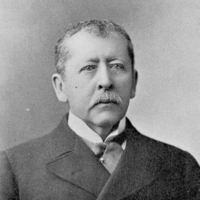
Thomas Bailey Aldrich (November 11, 1836– March 19, 1907) was an American literary figure notable for his long editorship of The Atlantic, during which he published works by Charles Chesnutt and for his poetry, including “The Unguarded Gates.” Biography Early life and education Thomas Bailey Aldrich was born in Portsmouth, New Hampshire on November 11, 1836. When Aldrich was a child, his father moved to New Orleans. After 10 years, Aldrich was sent back to Portsmouth to prepare for college. This period of his life is partly described in his semi-autobiographical novel The Story of a Bad Boy (1870), in which “Tom Bailey” is the juvenile hero. Career Aldrich abandoned college preparations after his father’s death in 1849. At age 16, he entered his uncle’s business office in New York in 1852 and became a constant contributor to the newspapers and magazines. Aldrich befriended other young poets, artists and wits of the metropolitan bohemia of the early 1860s, including Edmund Clarence Stedman, Richard Henry Stoddard, Fitz Hugh Ludlow, Bayard Taylor and Walt Whitman. From 1856 to 1859, Aldrich was on the staff of the Home Journal, then edited by Nathaniel Parker Willis. During the Civil War, he was the editor of the New York Illustrated News. In 1865 Aldrich returned to New England, where he was editor in Boston for ten years for Ticknor and Fields—then at the height of their prestige—of the eclectic weekly Every Saturday. It was discontinued in 1875. From 1881 to 1890, Aldrich was editor of the important Atlantic Monthly. As editor, he created tension with his publisher Henry Houghton by refusing to publish commissioned articles by his friends, including Woodrow Wilson and Marion Crawford. When Houghton chastised Aldrich for turning down submissions from his friend Daniel Coit Gilman, Aldrich threatened to resign and finally did so in June 1890. Meanwhile Aldrich continued his private writing, both in prose and verse. His talent was many-sided. He was well known for his form in poetry. His successive volumes of verse, chiefly The Ballad of Babie Bell (1856), Pampinea, and Other Poems (1861), Cloth of Gold (1874), Flower and Thorn (1876), Friar Jerome’s Beautiful Book (1881), Mercedes and Later Lyrics (1883), Wyndham Towers (1889), and the collected editions of 1865, 1882, 1897 and 1900, showed him to be a poet of lyrical skill and light touch. Critics believed him to show the influence of Robert Herrick. Aldrich’s longer narrative or dramatic poems were not as successful. Notable work includes such lyrics as “Hesperides,” “When the Sultan Goes to Ispahan,” “Before the Rain,” “Nameless Pain,” “The Tragedy,” “Seadrift,” “Tiger Lilies,” “The One White Rose,” “Palabras Cariñosas,” “Destiny,” or the eight-line poem “Identity.” Beginning with the collection of stories entitled Marjorie Daw and Other People (1873), Aldrich wrote works of realism and quiet humor. His novels Prudence Palfrey (1874), The Queen of Sheba (1877), and The Stillwater Tragedy (1880) had more dramatic action. The first portrayed Portsmouth with the affectionate touch shown in the shorter humorous tale, A Rivermouth Romance (1877). In An Old Town by the Sea (1893), Aldrich commemorated his birthplace again. Travel and description are the theme of From Ponkapog to Pesth (1883). Marriage and later life Aldrich married Lillian Woodman and had two sons. Mark Twain apparently detested Aldrich’s wife, writing in 1893: “Lord, I loathe that woman so! She is an idiot—an absolute idiot—and does not know it... and her husband, the sincerest man that walks... tied for life to this vacant hellion, this clothes-rack, this twaddling, blethering, driveling blatherskite!” The Aldriches were close friends of Henry L. Pierce, former mayor of Boston and chocolate magnate. At his death in 1896, he willed them his estate at Canton, Massachusetts. In 1901, Aldrich’s son Charles, married the year before, was diagnosed with tuberculosis. Aldrich built two houses, one for his son and one for him and his family, in Saranac Lake, New York, then the leading treatment center for the disease. On March 6, 1904, Charles Aldrich died of tuberculosis, age thirty-four. The family left Saranac Lake and never returned. Aldrich died in Boston on March 19, 1907. His last words were recorded as, “In spite of it all, I am going to sleep; put out the lights.” His Life was written by Ferris Greenslet (1908). In 1920, Aldrich’s widow Lillian Woodman Aldrich wrote her memoirs under the title Crowding Memories. References Wikipedia—https://en.wikipedia.org/wiki/Thomas_Bailey_Aldrich
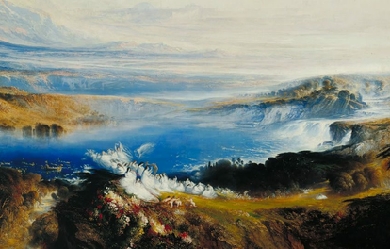
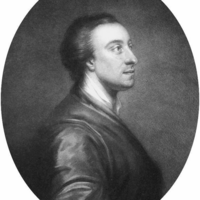
Mark Akenside (9 November 1721– 23 June 1770) was an English poet and physician. Biography Akenside was born at Newcastle upon Tyne, England, the son of a butcher. He was slightly lame all his life from a wound he received as a child from his father’s cleaver. All his relations were Dissenters, and, after attending the Royal Free Grammar School of Newcastle, and a dissenting academy in the town, he was sent in 1739 to the University of Edinburgh to study theology with a view to becoming a minister, his expenses being paid from a special fund set aside by the dissenting community for the education of their pastors. He had already contributed The Virtuoso, in imitation of Spenser’s style and stanza (1737) to the Gentleman’s Magazine, and in 1738 A British Philippic, occasioned by the Insults of the Spaniards, and the present Preparations for War (also published separately). After one winter as a theology student, Akenside changed to medicine as his field of study. He repaid the money that had been advanced for his theological studies, and became a deist. His politics, said Dr. Samuel Johnson, were characterized by an “impetuous eagerness to subvert and confound, with very little care what shall be established,” and he is caricatured in the republican doctor of Tobias Smollett’s The Adventures of Peregrine Pickle. He was elected a member of the Medical Society of Edinburgh in 1740. His ambitions already lay outside his profession, and his gifts as a speaker made him hope one day to enter Parliament. In 1740, he printed his Ode on the Winter Solstice in a small volume of poems. In 1741, he left Edinburgh for Newcastle and began to call himself surgeon, though it is doubtful whether he practised, and from the next year dates his lifelong friendship with Jeremiah Dyson (1722–1776). During a visit to Morpeth in 1738, Akenside had the idea for his didactic poem, The Pleasures of the Imagination, which was well received and later desecribed as 'of great beauty in its richness of description and language’, and was also subsequently translated into more than one foreign language. He had already acquired a considerable literary reputation when he came to London about the end of 1743 and offered the work to Robert Dodsley for £120. Dodsley thought the price exorbitant, and only accepted the terms after submitting the manuscript to Alexander Pope, who assured him that this was “no everyday writer”. The three books of this poem appeared in January 1744. His aim, Akenside tells us in the preface, was “not so much to give formal precepts, or enter into the way of direct argumentation, as, by exhibiting the most engaging prospects of nature, to enlarge and harmonize the imagination, and by that means insensibly dispose the minds of men to a similar taste and habit of thinking in religion, morals and civil life”. His powers fell short of this ambition; his imagination was not brilliant enough to surmount the difficulties inherent in a poem dealing so largely with abstractions; but the work was well received. Thomas Gray wrote to Thomas Warton that it was “above the middling”, but “often obscure and unintelligible and too much infected with the Hutchinson jargon”. William Warburton took offence at a note added by Akenside to the passage in the third book dealing with ridicule. Accordingly he attacked the author of the Pleasures of the Imagination—which was published anonymously—in a scathing preface to his Remarks on Several Occasional Reflections, in answer to Dr Middleton... (1744). This was answered, nominally by Dyson, in An Epistle to the Rev. Mr Warburton, in which Akenside probably had a hand. It was in the press when he left England in 1744 to secure a medical degree at Leiden. In little more than a month he had completed the necessary dissertation, De ortu et incremento foetus humani, and received his diploma. Returning to England Akenside unsuccessfully attempted to establish a practice in Northampton. In 1744, he published his Epistle to Curio, attacking William Pulteney (afterwards Earl of Bath) for having abandoned his liberal principles to become a supporter of the government, and in the next year he produced a small volume of Odes on Several Subjects, in the preface to which he lays claim to correctness and a careful study of the best models. His friend Dyson had meanwhile left the bar, and had become, by purchase, clerk to the House of Commons. Akenside had come to London and was trying to make a practice at Hampstead. Dyson took a house there, and did all he could to further his friend’s interest in the neighbourhood. But Akenside’s arrogance and pedantry frustrated these efforts, and Dyson then took a house for him in Bloomsbury Square, making him independent of his profession by an allowance stated to have been £300 a year, but probably greater, for it is asserted that this income enabled him to “keep a chariot”, and to live “incomparably well”. In 1746 he wrote his much-praised “Hymn to the Naiads”, and he also became a contributor to Dodsley’s Museum, or Literary and Historical Register. He was now twenty-five years old, and began to devote himself almost exclusively to his profession. He was elected a Fellow of the Royal Society in 1753. He was an acute and learned physician. He was admitted M.D. at the University of Cambridge in 1753, fellow of the Royal College of Physicians in 1754, and fourth censor in 1755. In June 1755 he read the Gulstonian lectures before the College, in September 1756 the Croonian Lectures, and in 1759 the Harveian Oration. In January 1759 he was appointed assistant physician, and two months later principal physician to Christ’s Hospital, but he was charged with harsh treatment of the poorer patients, and his unsympathetic character prevented the success to which his undeniable learning and ability entitled him. At the accession of George III both Dyson and Akenside changed their political opinions, and Akenside’s conversion to Tory principles was rewarded by the appointment of physician to the queen. Dyson became secretary to the treasury, lord of the treasury, and in 1774 privy councillor and cofferer to the household. Akenside died at his house in Burlington Street, where he had lived from 1762. His friendship with Dyson puts his character in the most amiable light. Writing to his friend so early as 1744, Akenside said that the intimacy had “the force of an additional conscience, of a new principle of religion”, and there seems to have been no break in their affection. He left all his effects and his literary remains to Dyson, who issued an edition of his poems in 1772. This included the revised version of the Pleasures of Imagination, on which the author was engaged at his death. Akenside’s verse was better when it was subjected to more severe metrical rules. His odes are rarely lyrical in the strict sense, but they are dignified and often musical. By 1911 his works were little read. Edmund Gosse described him as “a sort of frozen Keats”. Works * The best edition of Akenside’s Poetical Works is that prepared (1834) by Alexander Dyce for the Aldine Edition of the British Poets, and reprinted with small additions in subsequent issues of the series. See Dyce’s Life of Akenside prefixed to his edition, also Johnson’s Lives of the Poets, and the Life, Writings and Genius of Akenside (1832) by Charles Bucke. * The authoritative edition of Akenside’s Poetical Works is that prepared by Robin Dix (1996). An important earlier edition was prepared by Alexander Dyce (1834) for the Aldine Edition of the British Poets, and reprinted with small additions in subsequent issues of the series. See Dyce’s Life of Akenside prefixed to his edition, also Johnson’s Lives of the Poets, and the Life, Writings and Genius of Akenside (1832) by Charles Bucke. References and sources * References * Sources * This article incorporates text from a publication now in the public domain: Chisholm, Hugh, ed. (1911). “Akenside, Mark”. Encyclopædia Britannica (11th ed.). Cambridge University Press. Editnotes: External links * Works by Mark Akenside at Project Gutenberg * Works by or about Mark Akenside at Internet Archive * Works by Mark Akenside at LibriVox (public domain audiobooks) * Index entry for Mark Akenside at Poets’ Corner * Akenside’s The pleasures of imagination: a poem, in three books, New York, 1795. * Mark Akenside at University of Toronto Libraries References Wikipedia—https://en.wikipedia.org/wiki/Mark_Akenside
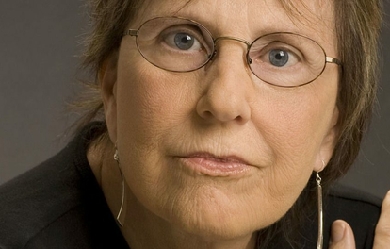
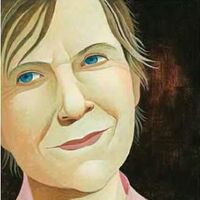
Rae Armantrout (born 13 April 1947) is an American poetess generally associated with the Language poets. Armantrout was born in Vallejo, California but grew up in San Diego. She has published ten books of poetry and has also been featured in a number of major anthologies. Armantrout currently teaches at the University of California, San Diego, where she is Professor of Poetry and Poetics.
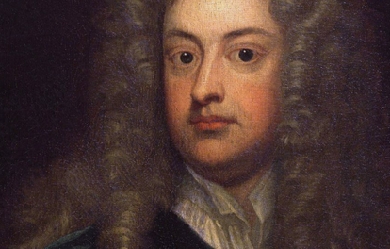
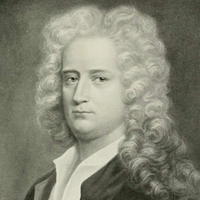
Joseph Addison (1 May 1672– 17 June 1719) was an English essayist, poet, playwright, and politician. He was the eldest son of The Reverend Lancelot Addison. His name is usually remembered alongside that of his long-standing friend, Richard Steele, with whom he founded The Spectator magazine. Life and writing Background Addison was born in Millstone, Wiltshire, but soon after his birth his father, Lancelot Addison, was appointed Dean of Lichfield and the Addison family moved into the cathedral close. He was educated at Charterhouse School, where he first met Richard Steele, and at The Queen’s College, Oxford. He excelled in classics, being specially noted for his Latin verse, and became a fellow of Magdalen College. In 1693, he addressed a poem to John Dryden, and his first major work, a book of the lives of English poets, was published in 1694. His translation of Virgil’s Georgics was published in the same year. Dryden, Lord Somers and Charles Montague, 1st Earl of Halifax, took an interest in Addison’s work and obtained for him a pension of £300 to enable him to travel to Europe with a view to diplomatic employment, all the time writing and studying politics. While in Switzerland in 1702, he heard of the death of William III, an event which lost him his pension, as his influential contacts, Halifax and Somers, had lost their employment with the Crown. Political career He returned to England at the end of 1703. For more than a year he remained without employment, but the Battle of Blenheim in 1704 gave him a fresh opportunity of distinguishing himself. The government, more specifically Lord Treasurer Godolphin, commissioned Addison to write a commemorative poem, and he produced The Campaign, which gave such satisfaction that he was forthwith appointed a Commissioner of Appeals in Halifax’s government. His next literary venture was an account of his travels in Italy, which was followed by an opera libretto titled Rosamund. In 1705, with the Whigs in political power, Addison was made Under-Secretary of State and accompanied Halifax on a mission to Hanover. Addison’s biographer states: “In the field of his foreign responsibilities Addison’s views were those of a good Whig. He had always believed that England’s power depended upon her wealth, her wealth upon her commerce, and her commerce upon the freedom of the seas and the checking of the power of France and Spain.” From 1708 to 1709 he was MP for the rotten borough of Lostwithiel. Addison was shortly afterwards appointed secretary to the new Lord Lieutenant of Ireland, Lord Wharton, and Keeper of the Records of that country. Under the influence of Wharton, he was Member of Parliament in the Irish House of Commons for Cavan Borough from 1709 until 1713. From 1710, he represented Malmesbury, in his home county of Wiltshire, holding the seat until his death. Magazine founder He encountered Jonathan Swift in Ireland and remained there for a year. Subsequently, he helped found the Kitcat Club and renewed his association with Richard Steele. In 1709 Steele began to bring out Tatler, to which Addison became almost immediately a contributor: thereafter he (with Steele) started The Spectator, the first number of which appeared on 1 March 1711. This paper, which at first appeared daily, was kept up (with a break of about a year and a half when The Guardian took its place) until 20 December 1714. His last undertaking was The Freeholder, a political paper, 1715–16. Plays He wrote the libretto for Thomas Clayton’s opera Rosamond, which had a disastrous premiere in London in 1707. In 1713 Addison’s tragedy Cato was produced, and was received with acclamation by both Whigs and Tories. He followed this effort with a comedic play, The Drummer (1716). Cato In 1712, Addison wrote his most famous work of fiction, Cato, a Tragedy. Based on the last days of Marcus Porcius Cato Uticensis, it deals with such themes as individual liberty versus government tyranny, Republicanism versus Monarchism, logic versus emotion, and Cato’s personal struggle to cleave to his beliefs in the face of death. It has a prologue written by Alexander Pope and an epilogue by Dr. Garth. The play was a success throughout Britain and its possessions in the New World, as well as Ireland. It continued to grow in popularity, especially in the American colonies, for several generations. Indeed, it was almost certainly literary inspiration for the American Revolution, being well known to many of the Founding Fathers. In fact, George Washington had it performed for the Continental Army while they were encamped at Valley Forge. Among the founders, according to John J. Miller, “no single work of literature may have been more important than Cato”. Some scholars have identified the inspiration for several famous quotations from the American Revolution in Cato. These include: Patrick Henry’s famous ultimatum: “Give me liberty or give me death!” (Supposed reference to Act II, Scene 4: "It is not now time to talk of aught/But chains or conquest, liberty or death."). Nathan Hale’s valediction: “I regret that I have but one life to give for my country.” (Supposed reference to Act IV, Scene 4: "What a pity it is/That we can die but once to serve our country."). Washington’s praise for Benedict Arnold in a letter to him: “It is not in the power of any man to command success; but you have done more—you have deserved it.” (Clear reference to Act I, Scene 2: “'Tis not in mortals to command success; but we’ll do more, Sempronius, we’ll deserve it.”). Not long after the American Revolution, Edmund Burke quotes the play as well in his Letter to Charles-Jean-François Depont (1789) in Further Reflections on the Revolution in France, saying the French may be yet be obliged to go through more transmigrations and “to pass, as one of our poets says, 'through great varieties of untried being’”, before their state obtains its final form. The poet in reference is of course Addison and the passage Burke quoted is from Cato (V.i. II): "Through what variety of untried being,/Through what new scenes and changes must we pass!” Though the play has fallen from popularity and is now rarely performed, it was widely popular and often cited in the eighteenth century, with Cato as an exemplar of republican virtue and liberty. For example, John Trenchard and Thomas Gordon were inspired by the play to write a series of letters, Cato’s Letters on individual rights, using the name “Cato”. The action of the play involves the forces of Cato at Utica, awaiting the arrival of Caesar just after Caesar’s victory at Thapsus (46 BC). The noble sons of Cato, Portius and Marcus, are both in love with Lucia, the daughter of Lucius, a senatorial ally of Cato. Juba, prince of Numidia, another fighting on Cato’s side, loves Cato’s daughter Marcia. Meanwhile, Sempronius, another senator, and Syphax, general of the Numidians, are conspiring secretly against Cato, hoping to draw off the Numidian army from supporting him. In the final act, Cato commits suicide, leaving his supporters to make their peace with the approaching Caesar—an easier task after Cato’s death, since he has been Caesar’s most implacable foe. Hymn Addison wrote the popular church hymn “The Spacious Firmament on High”, publishing it in The Spectator in 1712. It is sung either to the tune known as “London (Addison’s)” by John Sheeles, written c. 1720, or to “Creation” by Franz Haydn, 1798. Marriage and death The later events in the life of Addison did not contribute to his happiness. In 1716, he married Charlotte, Dowager Countess of Warwick, to whose son Edward Rich, 7th Earl of Warwick, he had been tutor, and his political career continued to flourish, as he served as Secretary of State for the Southern Department from 1717 to 1718. However, his political newspaper, The Freeholder, was much criticised, and Alexander Pope, in The Dunciad, made him an object of derision, christening him “Atticus”, likening him to an adder, “Willing to wound, and yet afraid to strike”. His wife appears to have been arrogant and imperious; his stepson, seventh Earl, was a rake and unfriendly to him; while in his public capacity his shyness made him of little use in Parliament. He eventually fell out with Steele over the Peerage Bill of 1719. In 1718, Addison was forced to resign as Secretary of State because of his poor health, but remained an MP until his death at Holland House, London, on 17 June 1719, in his 48th year, and was buried in Westminster Abbey. After Addison died, a story circulated that he, on his deathbed, had sent for his stepson, described as a wastrel, to see how a Christian meets death. On 6 April 1808, after Addison’s death, a town in upstate New York which had been originally organized as Middletown in March 1796 was changed to Addison, in honor of Joseph Addison. Contribution It is mostly as an essayist that Addison is remembered today. Addison began writing essays quite casually. In April 1709, his childhood friend, Richard Steele, started The Tatler. Addison inspired him to write this essay. Addison contributed 42 essays while Steele wrote 188. Of Addison’s help, Steele remarked, “when I had once called him in, I could not subsist without dependence on him”. On 2 January 1711, The Tatler was discontinued. On 1 March 1711, The Spectator was published, and it continued until 6 December 1712. The Spectator was issued daily and achieved great popularity. It exercised a great deal of influence over the reading public of the time. In The Spectator, Addison soon became the leading partner. He contributed 274 essays out a total of 555; Steele wrote 236 for this periodical. Addison also assisted Steele with the Guardian which Steele began in 1713. The breezy, conversational style of the essays later elicited Bishop Hurd’s reproving attribution of an “Addisonian Termination”, for preposition stranding, the casual grammatical construction that ends a sentence with a preposition. Besides the works above mentioned, he wrote an essay, Dialogues on Medals, and left incomplete a work, Of the Christian Religion. Timeline Albin Schram letters In 2005 an Austrian banker and collector named Albin Schram died and, in his laundry room, a collection of around 1000 letters from great historical figures was found. One was written by Joseph Addison, reporting on the debate in the House of Commons over the grant to John Churchill, 1st Duke of Marlborough, and his heirs, following the Battle of Ramillies. The letter was written on the day of the debate, probably to George Stepney. Addison explains that the motion was opposed by Mr Annesley, Ward, Caesar and Sir William Vevian, “One said that this was showing no honour to His Grace but to a posterity that he was not concern’d in. Casar... hoped ye Duke tho he had ben Victorious over the Enemy would not think of being so over a House of Commons: wch was said in pursuance to a Motion made by some of the Craftier sort that would not oppose the proposition directly but turn it off by a Side-Wind pretending that it being a money affaire it should be refer’d to a Committee of the whole House wch in all probability would have defeated the whole affaire....” Following the Duke of Marlborough’s highly successful campaigns of 1706, he and George Stepney became the first English regents of the Anglo-Dutch condominium for governing the southern Netherlands. It was Stepney who formally took possession of the principality of Mindelheim in Marlborough’s name on 26 May, following the Battle of Ramillies. On Marlborough’s return to London in November, Parliament granted his request that his grant of £5,000 'out of ye Post-Office’ be made in perpetuity for his heirs. A second letter to his friend Sir Richard Steele was also found, concerning the Tatler and other matters. ‘I very much liked your last paper upon the Courtship that is usually paid to the fair sex. I wish you had reserved the Letter in this days paper concerning Indecencies at Church for an entire piece. It wd have made as good a one as any you have published. Your Reflections upon Almanza are very good.’ The letter concludes with references to impeachment proceedings against Addison’s friend, Henry Sacheverell ('I am much obliged to you for yor Letters relating to Sackeverell’), and the Light House petition: 'I am something troubled that you have not sent away ye Letters received from Ireland to my Lord Lieutenant, particularly that from Mr Forster [the Attorney General] with the Enclosed petition about the Light House, which I hope will be delivered to the House before my Return’. Analysis Addison’s character has been described as kind and magnanimous, albeit somewhat cool and unimpassioned. His appealing manners and conversation made him one of the most popular men of his day; and while he laid his friends under obligations for substantial favours, he showed great forbearance towards his few enemies. His essays are noted for their clarity and elegant style, as well as their cheerful and respectful humour. One flaw in Addison’s character was a tendency to convivial excess, which nonetheless should be judged in view of the somewhat lax manners of his time. Thackeray wrote Addison and his colleague Richard Steele into the novel The History of Henry Esmond as characters. “As a man, he may not have deserved the adoration which he received from those who, bewitched by his fascinating society, and indebted for all the comforts of life to his generous and delicate friendship, worshipped him nightly, in his favourite temple at Button’s. But, after full inquiry and impartial reflection, we have long been convinced that he deserved as much love and esteem as can be justly claimed by any of our infirm and erring race. Some blemishes may undoubtedly be detected in his character; but the more carefully it is examined, the more it will appear, to use the phrase of the old anatomists, sound in the noble parts, free from all taint of perfidy, of cowardice, of cruelty, of ingratitude, of envy. Men may easily be named, in whom some particular good disposition has been more conspicuous than in Addison. But the just harmony of qualities, the exact temper between the stern and the humane virtues, the habitual observance of every law, not only of moral rectitude, but of moral grace and dignity, distinguish him from all men who have been tried by equally strong temptations, and about whose conduct we possess equally full information.”– Lord Macaulay References Wikipedia—https://en.wikipedia.org/wiki/Joseph_Addison

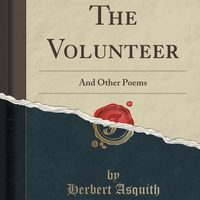
The Hon. Herbert Asquith (11 March 1881– 5 August 1947) was an English poet, novelist and lawyer. Biography Nicknamed “Beb” by his family, he was the second son of H. H. Asquith, British Prime Minister—with whom he is frequently confused—and younger brother of Raymond Asquith. His wife Lady Cynthia Asquith, whom he married in 1910, the daughter of Hugo Richard Charteris, 11th Earl of Wemyss (1857–1937), was also a writer. Asquith was greatly affected by his service with the Royal Artillery in World War I. His poems include “The Volunteer” and “The Fallen Subaltern”, the latter being a tribute to fallen soldiers; his poem “Soldiers at Peace” was set to music by Ina Boyle. His books include Roon and Young Orland. References Wikipedia—https://en.wikipedia.org/wiki/Herbert_Asquith_(poet)
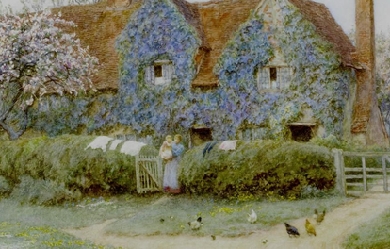
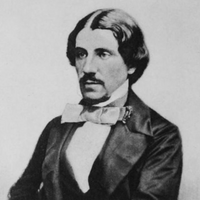
William Allingham (19 March 1824– 18 November 1889) was an Irish poet, diarist and editor. He wrote several volumes of lyric verse, and his poem 'The Faeries’ was much anthologised; but he is better known for his posthumously published Diary, in which he records his lively encounters with Tennyson, Carlyle and other writers and artists. His wife, Helen Allingham, was a well-known water-colorist and illustrator. Biography William Allingham was born on 19 March 1824 in the little port of Ballyshannon, County Donegal, Ireland, and was the son of the manager of a local bank who was of English descent. His younger brothers and sisters were Catherine (b. 1826), John (b. 1827), Jane (b. 1829), Edward (b. 1831; who lived only a few months) and a still-born brother (b. 1833). During his childhood his parents moved twice within the town, where the boy enjoyed the country sights and gardens, learned to paint and listened to his mother’s piano-playing. When he was nine, his mother died. He obtained a post in the custom-house of his native town, and held several similar posts in Ireland and England until 1870. During this period were published his Poems (1850; which included his well-known poem, 'The Fairies’) and Day and Night Songs (1855; illustrated by Dante Gabriel Rossetti and others). (Rossetti’s Letters to Allingham (1854–1870), edited by Dr. Birkbeck Hill, would be published in 1897.) Lawrence Bloomfield in Ireland, his most ambitious, though not his most successful work, a narrative poem illustrative of Irish social questions, appeared in 1864. He also edited The Ballad Book for the Golden Treasury series in 1864, and Fifty Modern Poems in 1865. In April 1870 Allingham retired from the customs service, moved to London and became sub-editor of Fraser’s Magazine, eventually becoming editor in succession to James Froude in June 1874– a post he would hold till 1879. On 22 August 1874 he married the illustrator, Helen Paterson, who was twenty-four years younger than he. His wife gave up her work as an illustrator and would become well known under her married name as a water-colour painter. At first the couple lived in London, at 12 Trafalgar Square, Chelsea, near Allingham’s friend, Thomas Carlyle, and it was there that they had their first two children– Gerald Carlyle (b. 1875 November) and Eva Margaret (b. 1877 February). In 1877 appeared Allingham’s Songs, Poems and Ballads. In 1881, after the death of Carlyle, the Allinghams moved to Sandhills near Witley in Surrey, where their third child, Henry William, was born in 1882. At this period Allingham published Evil May Day (1883), Blackberries (1884) and Irish Songs and Poems (1887). In 1888, because of William’s declining health, they moved back to the capital, to the heights of Hampstead village. But in 1889, on 18 November, William died at Hampstead. According to his wishes he was cremated. His ashes are interred at St. Anne’s church in his native Ballyshannon. Posthumously Allingham’s Varieties in Prose was published in 1893. William Allingham A Diary, edited by Mrs Helen Allingham and D. Radford, was published in 1907. It contains Allingham’s reminiscences of Alfred Tennyson, Thomas Carlyle and other writers and artists. Assessment and influence Working on an un-ostentatious scale, Allingham produced much lyrical and descriptive poetry, and the best of his pieces are thoroughly national in spirit and local colouring. His verse is clear, fresh, and graceful. His best-known poem remains his early work, “The Faeries”. Allingham had a substantial influence on W. B. Yeats; while the Ulster poet John Hewitt felt Allingham’s impact keenly, and attempted to revive his reputation by editing, and writing an introduction to, The Poems of William Allingham (Oxford University Press/ Dolmen Press, 1967). Allingham’s wide-ranging anthology of poetry, Nightingale Valley (1862) was to be the inspiration for the 1923 collection Come Hither by Walter de la Mare. We daren’t go a-hunting/For fear of little men... was quoted by the character of The Tinker near the beginning of the movie Willy Wonka & the Chocolate Factory, as well as in Mike Mignola’s comic book short story Hellboy: The Corpse, plus the 1973 horror film Don’t Look in the Basement. Several lines of the poem are quoted by Henry Flyte, a character in issue No. 65 of the Supergirl comic book, August 2011. This same poem was quoted in Andre Norton’s 1990 science fiction novel Dare To Go A-Hunting (ISBN 0-812-54712-8). Up the Airy Mountain is the title of a short story by Debra Doyle and James D. Macdonald; while the working title of Terry Pratchett’s The Wee Free Men was “For Fear of Little Men”. The Allingham Arms Hotel in Bundoran, Co. Donegal is named after him. References Wikipedia—https://en.wikipedia.org/wiki/William_Allingham
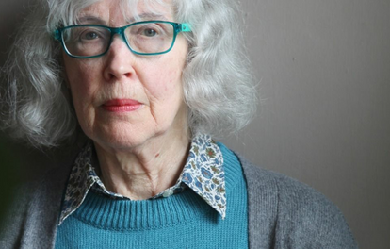
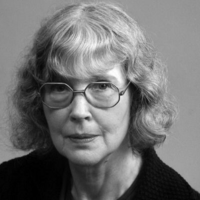
Fleur Adcock (born 10 February 1934) is a New Zealand poet and editor, of English and Northern Irish ancestry, who has lived much of her life in England. Life and career Fleur Adcock; the oldest of two sisters; was born in Papakura by Cyril John Adcock and Irene Robinson Adcock. She spent eight (8) years in England. Marilyn Duckworth; her sibling is the novelist. Fleur Adcock studied Classics at Victoria University of Wellington, graduating with an MA. She worked as an assistant lecturer and later an assistant librarian at the University of Otago in Dunedin until 1962. She was married to two famous New Zealand literary personalities. In August 1952, she married Alistair Campbell (divorced 1958). Then in February 1962 she married Barry Crump, divorcing in 1963. In 1963, Adcock returned to England and took up a post as an assistant librarian at the Foreign and Commonwealth Office in London until 1979. Since then she has been a freelance writer, living in East Finchley, north London. She has held several literary fellowships, including the Northern Arts Literary Fellowship in Newcastle upon Tyne and Durham in 1979–81. Adcock’s poetry is typically concerned with themes of place, human relationships and everyday activities, but frequently with a dark twist given to the mundane events she writes about. Formerly, her early work was influenced by her training as a classicist but her more recent work is looser in structure and more concerned with the world of the unconscious mind. Poetry collections 1964: The Eye of the Hurricane, Wellington: Reed 1967: Tigers, London: Oxford University Press 1971: High Tide in the Garden, London: Oxford University Press 1974: The Scenic Route, London and New York: Oxford University Press 1979: The Inner Harbour, Oxford and New York: Oxford University Press 1979: Below Loughrigg, Newcastle upon Tyne: Bloodaxe Books 1983: Selected Poems, Oxford and New York: Oxford University Press 1986: Hotspur: a ballad, Newcastle upon Tyne: Bloodaxe Books ISBN 978-1-85224-001-1 1986: The Incident Book, Oxford; New York: Oxford University Press 1988: Meeting the Comet, Newcastle upon Tyne: Bloodaxe Books 1991: Time-zones, Oxford and New York: Oxford University Press 1997: Looking Back, Oxford and Auckland: Oxford University Press 2000: Poems 1960–2000, Newcastle upon Tyne: Bloodaxe Books ISBN 978-1-85224-530-6 2010: Dragon Talk, Newcastle upon Tyne: Bloodaxe Books ISBN 978-1-85224-878-9 2013: Glass Wings, Tarset: Bloodaxe Books and Wellington, NZ: Victoria University Press. 2014: The Land Ballot, Wellington, NZ: Victoria University Press, Tarset: Bloodaxe Books. 2017: Hoard, Wellington, NZ: Victoria University Press, Hexham: Bloodaxe Books. Edited or translated 1982: Editor, Oxford Book of Contemporary New Zealand Poetry, Auckland: Oxford University Press 1983: Translator, The Virgin and the Nightingale: Medieval Latin poems, Newcastle upon Tyne: Bloodaxe Books, ISBN 978-0-906427-55-2 1987: Editor, Faber Book of 20th Century Women’s Poetry, London and Boston: Faber and Faber 1989: Translator, Orient Express: Poems. Grete Tartler, Oxford and New York: Oxford University Press 1992: Translator, Letters from Darkness: Poems, Daniela Crasnaru, Oxford: Oxford University Press 1994: Translator and editor, Hugh Primas and the Archpoet, Cambridge, England, and New York: Cambridge University Press 1995: Editor (with Jacqueline Simms), The Oxford Book of Creatures, verse and prose anthology, Oxford: Oxford University Press Awards and honours * 1961: Festival of Wellington Poetry Award * 1964: New Zealand State Literary Fund Award * 1968: Buckland Award (New Zealand) * 1968: Jessie Mackay Prize (New Zealand) * 1972: Jessie Mackay Prize (New Zealand) * 1976: Cholmondeley Award (United Kingdom) * 1979: Buckland Award (New Zealand) * 1984: New Zealand National Book Award * 1984: Elected Fellow of the Royal Society of Literature * 1988: Arts Council Writers’ Award (United Kingdom) * 1996: Officer of the Order of the British Empire for her contribution to New Zealand literature * 2006: Queen’s Gold Medal for Poetry (United Kingdom) * 2008: Companion of the New Zealand Order of Merit, for services to literature.
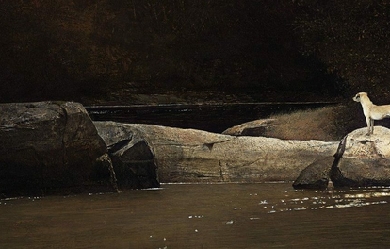
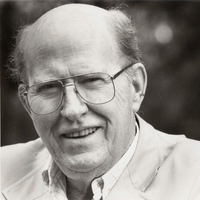
Archie Randolph Ammons (February 18, 1926– February 25, 2001) was an American poet who won the annual National Book Award for Poetry in 1973 and 1993. Preface Ammons wrote about humanity’s relationship to nature in alternately comic and solemn tones. His poetry often addresses religious and philosophical matters and scenes involving nature, almost in a Transcendental fashion. According to reviewer Daniel Hoffman, his work “is founded on an implied Emersonian division of experience into Nature and the Soul,” adding that it "sometimes consciously echo[es] familiar lines from Emerson, Whitman and [Emily] Dickinson.” Life Ammons grew up on a tobacco farm near Whiteville, North Carolina, in the southeastern part of the state. He served in the U.S. Navy during World War II, stationed on board the U.S.S. Gunason, a battleship escort. After the war, Ammons attended Wake Forest University, majoring in biology. Graduating in 1949, he served as a principal and teacher at Hattaras Elementary School later that year and also married Phyllis Plumbo. He received an M.A. in English from the University of California, Berkeley. In 1964, Ammons joined the faculty of Cornell University, eventually becoming Goldwin Smith Professor of English and Poet in Residence. He retired from Cornell in 1998. Ammons had been a longtime resident of the South Jersey communities of Northfield, Ocean City and Millville, when he wrote Corsons Inlet in 1962. Awards * During the five decades of his poetic career, Ammons was the recipient of many awards and citations. Among his major honors are the 1973 and 1993 U.S. National Book Awards (for Collected Poems, 1951-1971 and for Garbage); the Wallace Stevens Award from the Academy of American Poets (1998); and a MacArthur Fellowship in 1981, the year the award was established. A school in Miami, Florida, was named after him. * Ammons’s other awards include a 1981 National Book Critics Circle Award for A Coast of Trees; a 1993 Library of Congress Rebekah Johnson Bobbitt National Prize for Poetry for Garbage; the 1971 Bollingen Prize for Sphere; the Poetry Society of America’s Robert Frost Medal; the Ruth Lilly Prize; and fellowships from the Guggenheim Foundation and the American Academy of Arts and Letters. He was elected a Fellow of the American Academy of Arts and Sciences in 1978. Poetic style * Ammons often writes in two– or three-line stanzas. Poet David Lehman notes a resemblance between Ammons’s terza libre (unrhymed three-line stanzas) and the terza rima of Shelley’s “Ode to the West Wind.” Lines are strongly enjambed. * Some of Ammons’s poems are very short, one or two lines only, a form known as monostich (effectively, including the title, a kind of couplet), while others (for example, the book-length poems Sphere and Tape for the Turn of the Year) are hundreds of lines long, and sometimes composed on adding-machine tape or other continuous strips of paper. His National Book Award-winning volume Garbage is a long poem consisting of “a single extended sentence, divided into eighteen sections, arranged in couplets”. Ammons’s long poems tend to derive multiple strands from a single image. * Many readers and critics have noted Ammons’s idiosyncratic approach to punctuation. Lehman has written that Ammons “bears out T. S. Eliot’s observation that poetry is a 'system of punctuation’.” Instead of periods, some poems end with an ellipsis; others have no terminal punctuation at all. The colon is an Ammons “signature”; he uses it “as an all-purpose punctuation mark.” * The colon permits him to stress the linkage between clauses and to postpone closure indefinitely.... When I asked Archie about his use of colons, he said that when he started writing poetry, he couldn’t write if he thought “it was going to be important,” so he wrote "on the back of used mimeographed paper my wife brought home, and I used small [lowercase] letters and colons, which were democratic, and meant that there would be something before and after [every phrase] and the writing would be a kind of continuous stream." * According to critic Stephen Burt, in many poems Ammons combines three types of diction: * A “normal” range of language for poetry, including the standard English of educated conversation and the slightly rarer words we expect to see in literature (“vast,” “summon,” “universal”). * A demotic register, including the folk-speech of eastern North Carolina, where he grew up (“dibbles”), and broader American chatter unexpected in serious poems (“blip”). * The Greek– and Latin-derived phraseology of the natural sciences (“millimeter,” “information of actions / summarized”), especially geology, physics, and cybernetics. * Such a mixture is nearly unique, Burt says; these three modes are “almost never found together outside his poems”. Works * * Poetry * Ommateum, with Doxology. Philadelphia: Dorrance, 1955. * Expressions of Sea Level. Columbus: Ohio State UP, 1964. * Corsons Inlet. Ithaca, NY: Cornell UP, 1965. Reprinted by Norton, 1967. ISBN 0-393-04463-7 * Tape for the Turn of the Year. Ithaca, NY: Cornell UP, 1965. Reprinted by Norton, 1972. ISBN 0-393-00659-X * Northfield Poems. Ithaca, NY: Cornell UP, 1966. * Selected Poems. Ithaca, NY: Cornell UP, 1968. * Uplands. New York: Norton, 1970. ISBN 0-393-04322-3 * Briefings: Poems Small and Easy. New York: Norton, 1971. ISBN 0-393-04326-6 * Collected Poems, 1951-1971. New York: Norton, 1972. ISBN 0-393-04241-3—winner of the National Book Award * Sphere: The Form of a Motion. New York: Norton, 1974. ISBN 0-393-04388-6—winner of the Bollingen Prize for Poetry * Diversifications. New York: Norton, 1975. ISBN 0-393-04414-9 * The Selected Poems: 1951-1977. New York: Norton, 1977. ISBN 0-393-04465-3 * Highgate Road. Ithaca, NY: Cornell UP, 1977. * The Snow Poems . New York: Norton, 1977. ISBN 0-393-04467-X * Selected Longer Poems. New York: Norton, 1980. ISBN 0-393-01297-2 * A Coast of Trees. New York: Norton, 1981. ISBN 0-393-01447-9—winner of the National Book Critics Circle Award * Worldly Hopes. New York: Norton, 1982. ISBN 0-393-01518-1 * Lake Effect Country. New York: Norton, 1983. ISBN 0-393-01702-8 * The Selected Poems: Expanded Edition. New York: Norton, 1986. ISBN 0-393-02411-3 * Sumerian Vistas. New York: Norton, 1987. ISBN 0-393-02468-7 * The Really Short Poems. New York: Norton, 1991. ISBN 0-393-02870-4 * Garbage. New York: Norton, 1993. ISBN 0-393-03542-5—winner of the National Book Award * The North Carolina Poems. Alex Albright, ed. Rocky Mount, NC: NC Wesleyan College P, 1994. ISBN 0-933598-51-3 * Brink Road.New York: Norton, 1996. ISBN 0-393-03958-7 * Glare. New York: Norton, 1997. ISBN 0-393-04096-8 * Bosh and Flapdoodle: Poems. New York: Norton, 2005. ISBN 0-393-05952-9 * Selected Poems. David Lehman, ed. New York: Library of America, 2006. ISBN 1-931082-93-6 * The North Carolina Poems. New, expanded edition. Frankfort, KY: Broadstone Books, 2010. ISBN 978-0-9802117-2-6 * The Mule Poems. Fountain, NC: R. A. Fountain, 2010. ISBN 0-9842102-0-2 (chapbook) * Prose * Set in Motion: Essays, Interviews, and Dialogues (1996) * An Image for Longing: Selected Letters and Journals of A.R. Ammons, 1951-1974. Ed. Kevin McGuirk. Victoria, BC: ELS Editions, 2014. ISBN 978-1550584561 References Wikipedia—https://en.wikipedia.org/wiki/A._R._Ammons

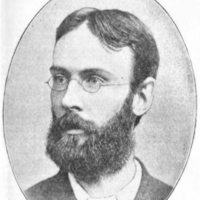
Francis William Lauderdale Adams (27 September 1862– 4 September 1893) was an essayist, poet, dramatist, novelist and journalist who produced a large volume of work in his short life. He was born in Malta the son of Andrew Leith Adams, an army surgeon, who became afterwards well known as a scientist, a fellow of the Royal Society, and an author of natural history books set in different parts of the British empire. Francis’ mother, Bertha Jane Grundy, became a well-known novelist. Francis was educated at Shrewsbury School and from 1879 served as an attaché in Paris. He took up a teaching position as an assistant master at Ventnor on the Isle of Wight, for two years. He joined the Social Democratic Federation in London in 1883. In 1884 he married Helen Uttley and migrated to Australia where he started work as a tutor on a station at Jerilderie, New South Wales, but soon moved on to Sydney and then Queensland, and dedicated himself to writing.
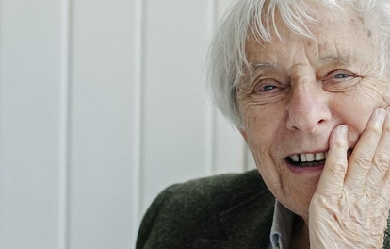
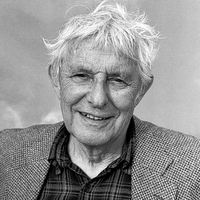
Daniel Abse, CBE FRSL (22 September 1923– 28 September 2014) was a Welsh poet. Early years Abse was born in Cardiff, Wales, to a Jewish family. He was the younger brother of politician and reformer Leo Abse and the eminent psychoanalyst, Wilfred Abse. Unusually for a middle-class Jewish boy, Dannie Abse attended St Illtyd’s College, a working-class Catholic school in Splott. Abse studied medicine, first at the University of Wales College of Medicine, and then at Westminster Hospital Medical School and King’s College London. Abse was a passionate supporter of Cardiff City football club. He first went to watch them play in 1934 and many of his writings refer to his experiences watching and lifelong love of the team known as the “The Bluebirds”. Career as poet Although best known as a poet, Abse worked in the medical field, and was a physician in a chest clinic for over thirty years. He received numerous literary awards and fellowships for his writing. In 1989, he received an honorary doctorate from the University of Wales. His first volume of poetry, After Every Green Thing, was published in 1949. His autobiographic work, Ash on a Young Man’s Sleeve, was published in 1954. He won the Welsh Arts Council Award in both 1971 and 1987, and the Cholmondeley Award in 1985. He was a Fellow of The Royal Society of Literature from 1983. In a foreword to Collected Poems 1948–1976, Abse noted that his poems are increasingly “rooted in actual experience,” both domestic and professional, and many display a reconciliation between Jewish and Welsh themes and traditions. Abse lived for several decades in the north-west area of London, mainly near Hampstead, where he has considerable ties. For several years he wrote a column for the Hampstead and Highgate Express, the local newspaper. These articles were subsequently published in book form. In 2005, his wife Joan Abse was killed in a car accident, while Abse suffered a broken rib. His poetry collection, Running Late, was published in 2006, and The Presence, a memoir of the year after his wife died, was published in 2007; it won the 2008 Wales Book of the Year award. The book was later dramatised for BBC Radio 4. He was awarded the Roland Mathias prize for Running Late. In 2009 Abse brought out a volume of collected poetry. In the same year, he received the Wilfred Owen Poetry Award. Abse was a judge for the inaugural 2010 Hippocrates Prize for Poetry and Medicine. Abse was appointed Commander of the Order of the British Empire (CBE) in the 2012 New Year Honours for services to poetry and literature. Dannie Abse died on 28 September 2014, aged 91. Books * After Every Green Thing Hutchinson, 1948 * Walking Under Water Hutchinson, 1952 * Fire in Heaven Hutchinson, 1956 * Mavericks: An Anthology (editor with Howard Sergeant) Editions Poetry and Poverty, 1957 * Tenants of the House: Poems 1951–1956 Hutchinson, 1957 * Poems, Golders Green Hutchinson, 1962 * Poems! Dannie Abse: A Selection Vista/Dufour, 1963 * Modern European Verse (editor) Vista, 1964 * Medicine on Trial Aldus, 1967 * Three Questor Plays Scorpion, 1967 * A Small Desperation Hutchinson, 1968 * Demo Sceptre, 1969 * Selected Poems Hutchinson, 1970 * Modern Poets in Focus 1 (editor) Corgi, 1971 * Modern Poets in Focus 3 (editor) Corgi, 1971 * Thirteen Poets (editor) Poetry Book Society, 1972 * Funland and Other Poems Hutchinson, 1973 * Modern Poets in Focus 5 (editor) Corgi, 1973 * The Dogs of Pavlov Vallentine, Mitchell, 1973 * A Poet in the Family Hutchinson, 1974 * Penguin Modern Poets 26 (Dannie Abse, D. J. Enright and Michael Longley) Penguin, 1975 * Collected Poems 1948–1976 Hutchinson, 1977 * More Words BBC, 1977 * My Medical School Robson, 1978 * Pythagoras Hutchinson, 1979 * Way Out in the Centre Hutchinson, 1981 * A Strong Dose of Myself Hutchinson, 1983 * One-legged on ice: poems University of Georgia Press, 1983 * Doctors and Patients (editor) Oxford University Press, 1984 * Ask the Bloody Horse Hutchinson, 1986 * Journals From the Ant Heap Hutchinson, 1986 * Voices in the Gallery: Poems and Pictures (editor with Joan Abse) Tate Gallery, 1986 * The Music Lover’s Literary Companion (editor with Joan Abse) Robson, 1988 * The Hutchinson Book of Post-War British Poetry (editor) Hutchinson, 1989 * White Coat, Purple Coat: Collected Poems 1948–1988 Hutchinson, 1989 * People (contributor) National Language Unit of Wales, 1990 * Remembrance of Crimes Past: Poems 1986–1989 Hutchinson, 1990 * The View from Row G: Three Plays Seren, 1990 * Intermittent Journals Seren, 1994 * On the Evening Road Hutchinson, 1994 * Selected Poems Penguin, 1994 * The Gregory Anthology 1991–1993 (editor with A. Stevenson) Sinclair-Stevenson, 1994 * Twentieth-Century Anglo-Welsh Poetry (editor) Seren, 1997 * Welsh Retrospective Seren, 1997 * Arcadia, One Mile Hutchinson, 1998 * Be seated, thou: poems 1989–1998 Sheep Meadow Press, 1999 * Encounters Hearing Eye, 2001 * Goodbye, Twentieth Century: An Autobiography Pimlico, 2001 * New and Collected Poems Hutchinson, 2002 * The Two Roads Taken: A Prose Miscellany Enitharmon Press, 2003 * Yellow Bird Sheep Meadow Press, 2004 * Running Late Hutchinson, 2006 * 100 Great Poems of Love and Lust: Homage to Eros (compiler and editor) Robson, 2007 * The Presence Hutchinson, 2007 * New Selected Poems 1949–2009: Anniversary Collection Hutchinson, 2009 (shortlisted for the Ted Hughes Award for New Work in Poetry) * Speak, Old Parrot Hutchinson, 2013 Fiction * Ash on a Young Man’s Sleeve (Hutchinson, 1954) * Some Corner of an English Field (Hutchinson, 1956) * O Jones, O Jones (Hutchinson, 1970) * There Was A Young Man From Cardiff (Hutchinson, 1991) * The Strange Case of Dr Simmonds & Dr Glas (Robson, 2002) References Wikipedia—https://en.wikipedia.org/wiki/Dannie_Abse

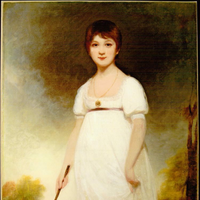
Jane Austen (/ˈdʒeɪn ˈɒstɪn/; 16 December 1775– 18 July 1817) was an English novelist known primarily for her six major novels, which interpret, critique and comment upon the British landed gentry at the end of the 18th century. Austen’s plots often explore the dependence of women on marriage in the pursuit of favourable social standing and economic security. Her works critique the novels of sensibility of the second half of the 18th century and are part of the transition to 19th-century literary realism. With the publications of Sense and Sensibility (1811), Pride and Prejudice (1813), Mansfield Park (1814) and Emma (1815), she achieved success as a published writer. She wrote two additional novels, Northanger Abbey and Persuasion, both published posthumously in 1818, and began a third, eventually titled Sanditon, but died before its completion. Her novels have rarely been out of print, although they were published anonymously and brought her little fame during her lifetime. A significant transition in her posthumous reputation occurred in 1869, fifty-two years after her death, when her nephew’s publication of A Memoir of Jane Austen introduced her to a wider audience. Austen has inspired a large number of critical essays and literary anthologies. Her novels have inspired many films, from 1940's Pride and Prejudice to more recent productions: Sense and Sensibility (1995) and Love & Friendship (2016). Biographical material Very little biographical detail of Austen’s life survives. Of the approximately 3,000 letters Jane wrote in her lifetime only about 160 survive. Her sister Cassandra (to whom most of the letters were addressed) burned “the greater part” of those she kept and censored those she did not destroy, ostensibly to prevent their falling into the hands of relatives and ensuring that “younger nieces did not read any of Jane Austen’s sometimes acid or forthright comments on neighbors or family members”. Other letters were destroyed by the heirs of Admiral Francis Austen, Jane’s brother. Most of the early biographical material about Austen was written by her relatives and reflects the family’s biases in favour of “good quiet Aunt Jane”, that her domestic situation was happy and that her family was the mainstay of her life. With little evidence other than the small amount of biographical materials her brother and nephew produced, which served to set a family legend according to Deirdre Le Faye. Early life Steventon Austen was born at Steventon on 16 December 1775. Her parents, George Austen (1731–1805), and his wife Cassandra (1739–1827), were members of the gentry. George was born into woollen manufacturers. Cassandra was a member of the prominent Leigh family, and daughter to the Master of Balliol, “short, fragile, pretty, and disinclined to marry”. They married on 26 April 1764 at Walcot Church in Bath. For much of Jane’s life, George Austen served as the rector of the Anglican parishes at Steventon, Hampshire, and a nearby village. From 1773 until 1796, he supplemented this income by farming and by teaching three or four boys at a time, who boarded at his home. After a few months at home, her mother placed her with Elizabeth Littlewood who nursed and raised her until she was weaned. She came from a family of six brothers and one sister. Her sister was Austen’s closest friend and confidante throughout her life. The eldest, James, was ten years older; George, a year younger, was born deaf and mute and raised in the village by a local family. During her childhood Jane taught herself enough sign language to communicate with George, suggesting he visited the family home regularly. Charles and Frank served in the navy, both rising to the rank of admiral. Edward was sold to be adopted, to his fourth cousin, Thomas Knight, whose name he took and estate he inherited in 1812. Of her brothers, Austen felt closest to Henry, a banker and, after his bank failed, an Anglican clergyman. Henry acted as his sister’s literary agent, whose large circle of friends and acquaintances in London included bankers, merchants, publishers, painters and actors. He exposed her to a social world not normally visible from a small parish in rural Hampshire. Private theatricals were an essential part of Austen’s education. From her early childhood, the family and friends staged a series of plays in the rectory barn, including Richard Sheridan’s The Rivals (1775) and David Garrick’s Bon Ton. Jane’s eldest brother James wrote the prologues and epilogues and Jane probably joined in these activities, first as a spectator and later as a participant. Most of the plays were comedies, which suggests how Austen’s satirical gifts were cultivated. At age 12, Jane tried her own hand at dramatic writing; she wrote three short plays during her teenage years. In 1783 Jane and Cassandra were sent to Oxford to be educated by Mrs. Ann Cawley, and they moved with her to Southampton later in the year. Both girls caught typhus and Jane nearly died. Austen was from then home educated, until she attended boarding school with her sister from early in 1785. The school curriculum probably included some French, spelling, needlework, dancing and music and, perhaps, drama. The sisters returned home before December 1786; the Austens could not afford to send both the daughters to school. After 1786, Austen “never again lived anywhere beyond the bounds of her immediate family environment”. The remainder of her education came from reading, guided by her father and brothers James and Henry. Austen apparently had unfettered access both to her father’s library and that of a family friend, Warren Hastings. Together these collections amounted to a large and varied library. Her father was also tolerant of Austen’s sometimes risqué experiments in writing, and provided both sisters with expensive paper and other materials for their writing and drawing. According to Park Honan, life in the Austen home was lived in “an open, amused, easy intellectual atmosphere” where the ideas of those with whom the Austens might disagree politically or socially were considered and discussed. Juvenilia (1787–1793) For her own and family’s amusement Austen wrote poems and stories. She later compiled “fair copies” of 29 of these early works into three bound notebooks, now referred to as the Juvenilia, containing work written between 1787 and 1793. There is manuscript evidence that Austen continued to work on these pieces as late as the period 1809–1811, and that her niece and nephew, Anna and James Edward Austen, made further additions as late as 1814. Among these works are a satirical novel in letters titled Love and Freindship [sic], where she mocked popular novels of sensibility, and The History of England, a manuscript of 34 pages accompanied by 13 watercolour miniatures by her sister, Cassandra. Austen’s History parodied popular historical writing, particularly Oliver Goldsmith’s History of England (1764). Austen’s Juvenilia are often, according to scholar Richard Jenkyns, “boisterous” and “anarchic”; he compares them to the work of 18th-century novelist Laurence Sterne and the 20th-century comedy group Monty Python. She sent short pieces of writing to her newborn nieces Fanny Catherine and Jane Anna Elizabeth. Austen was particularly proud of her accomplishments as a seamstress. She also attended church regularly, socialized frequently with friends and neighbours, and read novels—often of her own composition—aloud with her family in the evenings. Socializing with the neighbours often meant dancing, either impromptu in someone’s home after supper or at the balls held regularly at the assembly rooms in the town hall. Her brother Henry later said that “Jane was fond of dancing, and excelled in it”. In 1793 Austen began but abandoned a short play, later titled Sir Charles Grandison or the happy Man, a comedy in 6 acts, which she returned to and completed around 1800. This was a short parody of various school textbook abridgments of Austen’s favourite contemporary novel, The History of Sir Charles Grandison (1753), by Samuel Richardson. Honan speculates that not long after writing Love and Freindship [sic] in 1789, Austen decided to “write for profit, to make stories her central effort”, that is, to become a professional writer. Whenever she made that decision, beginning in about 1793, Austen began to write longer, more sophisticated works. Between 1793 and 1795 Austen wrote Lady Susan, a short epistolary novel, usually described as her most ambitious and sophisticated early work. It is unlike any of Austen’s other works. Austen biographer Claire Tomalin describes the novella’s heroine as a sexual predator who uses her intelligence and charm to manipulate, betray and abuse her lovers, friends and family. Tomalin writes: “Told in letters, it is as neatly plotted as a play, and as cynical in tone as any of the most outrageous of the Restoration dramatists who may have provided some of her inspiration... It stands alone in Austen’s work as a study of an adult woman whose intelligence and force of character are greater than those of anyone she encounters.” Early manuscripts (1796–1798) When Austen was twenty, Tom Lefroy, a neighbour, visited Steventon from December 1795 to January 1796. He had just finished a university degree and was moving to London for training as a barrister. Lefroy and Austen would have been introduced at a ball or other neighbourhood social gathering, and it is clear from Austen’s letters to Cassandra that they spent considerable time together: “I am almost afraid to tell you how my Irish friend and I behaved. Imagine to yourself everything most profligate and shocking in the way of dancing and sitting down together.” The English scholar John Halperin wrote that Austen almost certainly died a virgin, and though she had several chances to marry, all ended in disappointment. Austen wrote in her first surviving letter to her sister Cassandra that Lefroy was “very gentlemanlike, good-looking, pleasant young man”. Austen called him her “friend” and explained that on this account Cassandra must anxious to know more about him. Five days later in another letter, Austen wrote she expected an “offer” from her “friend” and that “I shall refuse him, however, unless he promises to give away his white coat”, going on to write “I will confide myself in the future to Mr. Tom Lefroy, for whom I don’t give a sixpence” and refuse all others. The next day, Austen wrote: “The day will come on which I flirt my last with Tom Lefroy and when you receive this it will be all over. My tears flow as I write at this melancholy idea”. Halperin cautioned that Austen often liked to satirize the sentimental romantic literature that was popular at the time in her letters, and some of the statements about Lefroy may have been ironic. However, it is clear that Austen was genuinely attracted to Lefroy and subsequently none of her other suitors ever quite measured up to him. The Lefroy family intervened and sent him away at the end of January. Marriage was impractical, as both Lefroy and Austen must have known. Neither had any money, and he was dependent on a great-uncle in Ireland to finance his education and establish his legal career. If Tom Lefroy later visited Hampshire, he was carefully kept away from the Austens, and Jane Austen never saw him again. In November 1798, Lefroy was still on Austen’s mind as she wrote to her sister she had tea with one of his relatives, wanted desperately to ask about him, but could not bring herself to raise the subject. After finishing Lady Susan, Austen began her first full-length novel Elinor and Marianne. Her sister remembered that it was read to the family "before 1796" and was told through a series of letters. Without surviving original manuscripts, there is no way to know how much of the original draft survived in the novel published anonymously in 1811 as Sense and Sensibility. Austen began a second novel, First Impressions, in 1796. She completed the initial draft in August 1797, aged 21, (later published as Pride and Prejudice); as with all of her novels, Austen read the work aloud to her family as she was working on it and it became an “established favourite”. At this time, her father made the first attempt to publish one of her novels. In November 1797, George Austen wrote to Thomas Cadell, an established publisher in London, to ask if he would consider publishing First Impressions. Cadell returned Mr. Austen’s letter, marking it “Declined by Return of Post”. Austen may not have known of her father’s efforts. Following the completion of First Impressions, Austen returned to Elinor and Marianne and from November 1797 until mid-1798, revised it heavily; she eliminated the epistolary format in favour of third-person narration and produced something close to Sense and Sensibility. In 1797, Austen met her sister-in-law, Eliza de Feullide, a French aristocrat whose first husband the Comte de Feullide had been guillotined, causing her to flee to Britain, where she married Henry Austen. The description of the execution of the Comte de Feullide related by his widow left Austen with an intense horror of the French Revolution that lasted for the rest of her life. During the middle of 1798, after finishing revisions of Elinor and Marianne, Austen began writing a third novel with the working title Susan—later Northanger Abbey—a satire on the popular Gothic novel. Austen completed her work about a year later. In early 1803, Henry Austen offered Susan to Benjamin Crosby, a London publisher, who paid £10 for the copyright. Crosby promised early publication and went so far as to advertise the book publicly as being “in the press”, but did nothing more. The manuscript remained in Crosby’s hands, unpublished, until Austen repurchased the copyright from him in 1816. Bath and Southampton In December 1800 George Austen unexpectedly announced his decision to retire from the ministry, leave Steventon, and move the family to Bath. While retirement and travel were good for the elder Austens, Jane Austen was shocked to be told she was moving from the only home she had ever known. An indication of her state of mind is her lack of productivity as a writer during the time she lived at Bath. She was able to make some revisions to Susan, and she began and then abandoned a new novel, The Watsons, but there was nothing like the productivity of the years 1795–1799. Tomalin suggests this reflects a deep depression disabling her as a writer, but Honan disagrees, arguing Austen wrote or revised her manuscripts throughout her creative life, except for a few months after her father died. The years from 1801 to 1804 are something of a blank space for Austen scholars as Cassandra destroyed all of her letters from her sister in this period for unknown reasons. In December 1802 Austen received her only known proposal of marriage. She and her sister visited Alethea and Catherine Bigg, old friends who lived near Basingstoke. Their younger brother, Harris Bigg-Wither, had recently finished his education at Oxford and was also at home. Bigg-Wither proposed and Austen accepted. As described by Caroline Austen, Jane’s niece, and Reginald Bigg-Wither, a descendant, Harris was not attractive—he was a large, plain-looking man who spoke little, stuttered when he did speak, was aggressive in conversation, and almost completely tactless. However, Austen had known him since both were young and the marriage offered many practical advantages to Austen and her family. He was the heir to extensive family estates located in the area where the sisters had grown up. With these resources, Austen could provide her parents a comfortable old age, give Cassandra a permanent home and, perhaps, assist her brothers in their careers. By the next morning, Austen realised she had made a mistake and withdrew her acceptance. No contemporary letters or diaries describe how Austen felt about this proposal. In 1814, Austen wrote a letter to her niece, Fanny Knight, who had asked for advice about a serious relationship, telling her that "having written so much on one side of the question, I shall now turn around & entreat you not to commit yourself farther, & not to think of accepting him unless you really do like him. Anything is to be preferred or endured rather than marrying without Affection". The English scholar Douglas Bush wrote that Austen had “had a very high ideal of the love that should unite a husband and wife... All of her heroines... know in proportion to their maturity, the meaning of ardent love”. A possible autobiographical element in Sense and Sensibility occurs when Elinor Dashwood contemplates that “the worse and most irremediable of all evils, a connection for life” with an unsuitable man. In 1804, while living in Bath, Austen started but did not complete her novel, The Watsons. The story centres on an invalid and improvised clergyman and four unmarried daughters. Sutherland describes the novel as “a study in the harsh economic realities of dependent women’s lives”. Honan suggests, and Tomalin agrees, that Austen chose to stop work on the novel after her father died on 21 January 1805 and her personal circumstances resembled those of her characters too closely for her comfort. Her father’s relatively sudden death left Jane, Cassandra, and their mother in a precarious financial situation. Edward, James, Henry, and Francis Austen pledged to make annual contributions to support their mother and sisters. For the next four years, the family’s living arrangements reflected their financial insecurity. They spent part of the time in rented quarters in Bath before leaving the city in June 1805 for a family visit to Steventon & Godmersham. They moved for the autumn months to the newly fashionable seaside resort of Worthing, on the Sussex coast, where they resided at Stanford Cottage. It was here that Austen is thought to have written her fair copy of Lady Susan and added its “Conclusion”. In 1806 the family moved to Southampton, where they shared a house with Frank Austen and his new wife. A large part of this time they spent visiting various branches of the family. On 5 April 1809, about three months before the family’s move to Chawton, Austen wrote an angry letter to Richard Crosby, offering him a new manuscript of Susan if needed to secure the immediate publication of the novel, and requesting the return of the original so she could find another publisher. Crosby replied that he had not agreed to publish the book by any particular time, or at all, and that Austen could repurchase the manuscript for the £10 he had paid her and find another publisher. She did not have the resources to buy the copyright back at that time, but was able to purchase it in 1816. Chawton Around early 1809 Austen’s brother Edward offered his mother and sisters a more settled life—the use of a large cottage in Chawton village that was part of Edward’s nearby estate, Chawton House. Jane, Cassandra and their mother moved into Chawton cottage on 7 July 1809. Life was quieter in Chawton than it had been since the family’s move to Bath in 1800. The Austens did not socialise with gentry and entertained only when family visited. Her niece Anna described the family’s life in Chawton: “It was a very quiet life, according to our ideas, but they were great readers, and besides the housekeeping our aunts occupied themselves in working with the poor and in teaching some girl or boy to read or write.” Published author During her time at Chawton, Jane Austen published four generally well received novels. Through her brother Henry, the publisher Thomas Egerton agreed to publish Sense and Sensibility, which appeared in October 1811. Reviews were favourable and the novel became fashionable among young aristocratic opinion-makers; the edition sold out by mid-1813. Austen’s earnings from Sense and Sensibility provided her with some financial and psychological independence. Egerton then published Pride and Prejudice, a revision of First Impressions, in January 1813. He advertised the book widely and it was an immediate success, garnering three favourable reviews and selling well. By October 1813 Egerton was able to begin selling a second edition. Mansfield Park was published by Egerton in May 1814. While Mansfield Park was ignored by reviewers, it was very popular with readers. All copies were sold within six months, and Austen’s earnings on this novel were larger than for any of her other novels. Austen learned that the Prince Regent admired her novels and kept a set at each of his residences. In November 1815, the Prince Regent’s librarian James Stanier Clarke invited Austen to visit the Prince’s London residence and hinted Austen should dedicate the forthcoming Emma to the Prince. Though Austen disliked the Prince Regent, she could scarcely refuse the request. Austen disapproved of the Prince Regent on the account of his womanizing, gambling, drinking, spendthrift ways and generally disreputable behaviour. She later wrote Plan of a Novel, according to hints from various quarters, a satiric outline of the “perfect novel” based on the librarian’s many suggestions for a future Austen novel. Austen was greatly annoyed by Clarke’s often pompous literacy advice, and the Plan of A Novel parodying Clarke was intended as her revenge for all of the unwanted letters she had received from the royal librarian. In mid-1815 Austen moved her work from Egerton to John Murray, a better known London publisher, who published Emma in December 1815 and a second edition of Mansfield Park in February 1816. Emma sold well but the new edition of Mansfield Park did poorly, and this failure offset most of the income from Emma. These were the last of Austen’s novels to be published during her lifetime. While Murray prepared Emma for publication, Austen began The Elliots, later published as Persuasion. She completed her first draft in July 1816. In addition, shortly after the publication of Emma, Henry Austen repurchased the copyright for Susan from Crosby. Austen was forced to postpone publishing either of these completed novels by family financial troubles. Henry Austen’s bank failed in March 1816, depriving him of all of his assets, leaving him deeply in debt and losing Edward, James, and Frank Austen large sums. Henry and Frank could no longer afford the contributions they had made to support their mother and sisters. Illness and death Austen was feeling unwell by early 1816, but ignored the warning signs. By the middle of that year, her decline was unmistakable, and she began a slow, irregular, deterioration. The majority of biographers rely on Dr. Vincent Cope’s 1964 retrospective diagnosis and list her cause of death as Addison’s disease, although her final illness has also been described as resulting from Hodgkin’s lymphoma. She continued to work in spite of her illness. Dissatisfied with the ending of The Elliots, she rewrote the final two chapters, finished on 6 August 1816. In January 1817 she began The Brothers (titled Sanditon when published in 1925), and completed twelve chapters before stopping work in mid-March 1817, probably due to illness. Austen made light of her condition, describing it as “bile” and rheumatism. As her illness progressed she experienced difficulty walking and lacked energy; by mid-April she was confined to bed. In May Cassandra and Henry brought her to Winchester for treatment. Austen died in Winchester on 18 July 1817, at the age of 41. Henry, through his clerical connections, arranged for his sister to be buried in the north aisle of the nave of Winchester Cathedral. The epitaph composed by her brother James praises Austen’s personal qualities, expresses hope for her salvation, mentions the “extraordinary endowments of her mind”, but does not explicitly mention her achievements as a writer. Posthumous publication After Austen’s death, Cassandra, Henry Austen, and Murray arranged for the publication of Persuasion and Northanger Abbey as a set. Henry Austen contributed a Biographical Note which for the first time identified his sister as the author of the novels. Tomalin describes it as “a loving and polished eulogy”. Sales were good for a year—only 321 copies remained unsold at the end of 1818. In 1832 Richard Bentley purchased the remaining copyrights to all of her novels, and over the following winter published five illustrated volumes as part of his Standard Novels series. In October 1833, Bentley released the first collected edition of her works. Since then, Austen’s novels have been continuously in print. Genre and style Austen’s works critique the sentimental novels of the second half of the 18th century and are part of the transition to 19th-century literary realism. The earliest English novelists, Richardson, Henry Fielding and Tobias Smollett, were followed by the school of sentimentalists and romantics such as Walter Scott, Horace Walpole, Clara Reeve, Ann Radcliffe, Laurence Sterne, and Oliver Goldsmith, whose style and genre Austen rejected, returning the novel on a “slender thread” to the tradition of Richardson and Fielding for a “realistic study of manners”. Walter Scott noted Austen’s “resistance to the trashy sensationalism of much of modern fiction—'the ephemeral productions which supply the regular demand of watering places and circulating libraries’”. Yet her rejection of these genres is complex, as evidenced by Northanger Abbey and Emma. Similar to William Wordsworth, who excoriated the modern frantic novel in the “Preface” to his Lyrical Ballads (1800), Austen distances herself from escapist novels; the discipline and innovation she demonstrates is similar to his, and she shows “that rhetorically less is artistically more.” She eschewed popular Gothic fiction, stories of terror in which a heroine typically was stranded in a remote location, a castle or abbey (32 novels between 1784 and 1818 contain the word “abbey” in their title). Yet in Northanger Abbey she alludes to the trope, with the heroine, Catherine, anticipating a move to a remote locale. Rather than full-scale rejection or parody, Austen transforms the genre, juxtaposing reality, with descriptions of elegant rooms and modern comforts, against the heroine’s “novel-fueled” desires. Nor does she completely denigrate Gothic fiction: instead she transforms settings and situations, such that the heroine is still imprisoned, yet her imprisonment is mundane and real—regulated manners and the strict rules of the ballroom. In Sense and Sensibility Austen presents characters who are more complex than in staple sentimental fiction, according to critic Keymer, who notes that although it is a parody of popular sentimental fiction, “Marianne in her sentimental histrionics responds to the calculating world... with a quite justifiable scream of female distress.” Richardson’s Pamela, the prototype for the sentimental novel, is a didactic love story with a happy ending, written at a time women were beginning to have the right to choose husbands and yet were restricted by social conventions. Austen attempted Richardson’s epistolary style, but found the flexibility of narrative more conducive to her realism, a realism in which each conversation and gesture carries a weight of significance. The narrative style utilises free indirect speech—she was the first English novelist to do so extensively—through which she had the ability to present a character’s thoughts directly to the reader and yet still retain narrative control. The style allows an author to vary discourse between the narrator’s voice and values and those of the characters. Austen had a natural ear for speech and dialogue, according to scholar Mary Lascelles “Few novelists can be more scrupulous than Jane Austen as to the phrasing and thoughts of their characters.” Techniques such as fragmentary speech suggest a character’s traits and their tone; “syntax and phrasing rather than vocabulary” is utilised to indicate social variants. Dialogue reveals a character’s mood—frustration, anger, happiness—each treated differently and often through varying patterns of sentence structures. For example, when Elizabeth Bennett rejects Darcy, her stilted speech and the convoluted sentence structure reveals that he has wounded her: From the very beginning, from the first moment I may almost say, of my acquaintance with you, your manners impressing me with the fullest belief of your arrogance, your conceit, and your selfish disdain of the feelings of others, were such as to form that the groundwork of disapprobation, on which succeeding events have built so immovable a dislike. And I had not known you a month before I felt that you were the last man in the world whom I could ever be prevailed on to marry. Austen’s plots highlight women’s traditional dependence on marriage to secure social standing and economic security. As an art form, the 18th-century novel lacked the seriousness of its equivalents from the 19th century, when novels were treated as “the natural vehicle for discussion and ventilation of what mattered in life”. Rather than delving too deeply into the psyche of her characters, Austen enjoys them and imbues them with humour, according to critic John Bayley. He believes that the well-spring of her wit and irony is her own attitude that comedy “is the saving grace of life”. Part of Austen’s fame rests on the historical and literary significance that she was the first woman to write great comic novels. Samuel Johnson’s influence is evident, in that she follows his advice to write “a representation of life as may excite mirth”. Her humour comes from her modesty and lack of superiority, allowing her most successful characters, such as Elizabeth Bennet, to transcend the trivialities of life, which the more foolish characters are overly absorbed in. Austen used comedy to explore the individualism of women’s lives and gender relations, and she appears to have used it to find the goodness in life, often fusing it with “ethical sensibility”, creating artistic tension. Critic Robert Polhemus writes, “To appreciate the drama and achievement of Austen, we need to realize how deep was her passion for both reverence and ridicule... and her comic imagination reveals both the harmonies and the telling contradictions of her mind and vision as she tries to reconcile her satirical bias with her sense of the good.” Reception Contemporaneous responses As Austen’s works were published anonymously, they brought her little personal renown. They were fashionable among opinion-makers, but were rarely reviewed. Most of the reviews were short and on balance favourable, although superficial and cautious. They most often focused on the moral lessons of the novels. Sir Walter Scott, a leading novelist of the day, contributed one anonymously. Using the review as a platform to defend the then-disreputable genre of the novel, he praised Austen’s realism. The other important early review was attributed to Richard Whately in 1821. However, Whately denied having authored the review, which drew favourable comparisons between Austen and such acknowledged greats as Homer and Shakespeare, and praised the dramatic qualities of her narrative. Scott and Whately set the tone for almost all subsequent 19th-century Austen criticism. 19th century Because Austen’s novels did not to conform to Romantic and Victorian expectations that "powerful emotion [be] authenticated by an egregious display of sound and colour in the writing", 19th-century critics and audiences preferred the works of Charles Dickens and George Eliot. In a rare sympathetic review, in this case of Emma in 1815, Sir Walter Scott wrote that book displayed “the art of copying from nature as she really exists in the common walks of life, and presenting to the reader, instead of the splendid scenes from an imaginary world, a correct and and striking representation of that which is daily taking place around him”. Through Scott was positive, Austen’s work did not match the prevailing aesthetic values of the Romantic zeitgeist. Though Austen’s novels were republished in Britain from the 1830s and sold at a steady rate, they were not bestsellers. Austen had many admiring readers in the 19th century who considered themselves part of a literary elite. Philosopher and literary critic George Henry Lewes expressed this viewpoint in a series of enthusiastic articles published in the 1840s and 1850s. This theme continued later in the century with novelist Henry James, who referred to Austen several times with approval and on one occasion ranked her with Shakespeare, Cervantes, and Henry Fielding as among “the fine painters of life”. The publication of James Edward Austen-Leigh’s A Memoir of Jane Austen in 1869 introduced Austen to a wider public as “dear aunt Jane”, the respectable maiden aunt. Publication of the Memoir spurred the reissue of Austen’s novels—the first popular editions were released in 1883 and fancy illustrated editions and collectors’ sets quickly followed. Author and critic Leslie Stephen described the popular mania that started to develop for Austen in the 1880s as “Austenolatry”. Around the start of the 20th century, members of the literary elite reacted against the popularization of Austen. They referred to themselves as Janeites in order to distinguish themselves from the masses who did not properly understand her works. For example, Henry James responded negatively to what he described as “a beguiled infatuation” with Austen, a rising tide of public interest that exceeded Austen’s “intrinsic merit and interest”. The American literacy critic A. Walton Litz noted that the “anti-Janites” in the 19th and 20th centuries comprise a formidable literacy squad of Mark Twain, Henry James, Charlotte Bronte, D.H. Lawrence and Kingsley Amis, but in “every case the adverse judgement merely reveals the special limitations or eccentricities of the critic, leaving Jane Austen relativity untouched”. Modern Several of Austen’s works have been subject to academic study. The first examination came from a 1911 essay by Oxford Shakespearean scholar A. C. Bradley. In his essay, Bradley groups of Austen’s novels into “early” and “late” works, a distinction still used by scholars today. The second was R. W. Chapman’s 1923 edition of Austen’s collected works. Not only was it the first scholarly edition of Austen’s works, it was also the first scholarly edition of any English novelist. The Chapman text has remained the basis for all subsequent published editions of Austen’s works. With the publication in 1939 of Mary Lascelles’s Jane Austen and Her Art, the academic study of Austen took hold. Lascelles’s innovative work included an analysis of the books Austen read and the effect of her reading on her work, an extended analysis of Austen’s style, and her “narrative art”. Concern arose that academics were taking over Austen criticism and that it was becoming increasingly esoteric, a debate that has continued since. A more revisionist approach in the 1940s, together with F. R. Leavis’s and Ian Watt’s pronouncement that Austen was one of the great writers of English fiction, did much to cement Austen’s reputation amongst academics. They agreed that she "combined [Henry Fielding’s and Samuel Richardson’s] qualities of interiority and irony, realism and satire to form an author superior to both". The period since World War II has seen more scholarship on Austen using a diversity of critical approaches, including feminist theory, and perhaps most controversially, postcolonial theory. The continuing disconnection between the popular appreciation of Austen, particularly by modern Janeites, and the academic appreciation of Austen has widened considerably. A sign of the way that Austen can still spark debate can be seen when the American English professor Gene Koppel mentioned in a lecture that Austen and her family were “Tories of the deepest dye” [the Tories were the conservative party while the Whigs were the liberal party], a statement which greatly upset many of Koppel’s liberal students, who much to his amusement, complained to him how was it possible that Austen was a conservative?. The conservative Koppel noted several feminist authors such as Claudia Johnson and Mollie Sandock were claiming Austen for their own cause. Citing the work of Hans-Georg Gadamer, Koppel argued that different people can and do react to the same work of literature in different ways as art is always a subjective discipline as various people have their standards for evaluating literature.?. A such, Koppel argued that competing interpretations of Austen’s work, provided that they are grounded in readings of her work are all equally valid, and so it equally possible to see Austen as a feminist critiquing Regency society and as a conservative upholding the values of Regency society. Adaptations Austen’s novels have resulted in sequels, prequels and adaptations of almost every type, from soft-core pornography to fantasy. From the 19th century, her family members published conclusions to her incomplete novels, and by 2000 there were over 100 printed adaptations. The first film adaptation was the 1940 MGM production of Pride and Prejudice starring Laurence Olivier and Greer Garson. BBC television dramatisations since the 1970s have attempted to adhere meticulously to Austen’s plots, characterisations and settings. From 1995 a large number of Austen adaptations began to appear, with Ang Lee’s film of Sense and Sensibility, for which screenwriter and star Emma Thompson won an Academy Award, and the BBC’s immensely popular TV mini-series Pride and Prejudice, starring Jennifer Ehle and Colin Firth. A 2005 British production of Pride and Prejudice, directed by Joe Wright and starring Keira Knightley and Matthew Macfadyen, was followed in 2007 by ITV’s Mansfield Park, Northanger Abbey and Persuasion, and in 2016 by Love & Friendship, a film version of Lady Susan that borrowed the title of Austen’s Love and Freindship [sic].
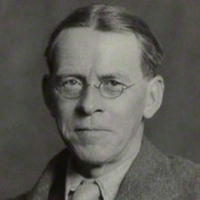
Lascelles Abercrombie (also known as the Georgian Laureate, linking him with the “Georgian poets”; 9 January 1881– 27 October 1938) was a British poet and literary critic, one of the “Dymock poets”. Biography He was born in Ashton upon Mersey, Sale, Cheshire and educated at Malvern College, and at Owens College. Before the First World War, he lived for a time at Dymock in Gloucestershire, part of a community that included Rupert Brooke and Robert Frost. Edward Thomas visited. During these early years, he worked as a journalist, and he started his poetry writing. His first book, Interludes and Poems (1908), was followed by Mary and the Bramble (1910) and the poem Deborah, and later by Emblems of Love (1912) and Speculative Dialogues (1913). His critical works include An Essay Towards a Theory of Art (1922), and Poetry, Its Music and Meaning (1932). Collected Poems (1930) was followed by The Sale of St. Thomas (1931), a poetic drama. During World War I, he served as a munitions examiner, after which, he was appointed to the first lectureship in poetry at the University of Liverpool. In 1922 he was appointed Professor of English at the University of Leeds in preference to J. R. R. Tolkien, with whom he shared, as author of The Epic (1914), a professional interest in heroic poetry. In 1929 he moved on to the University of London, and in 1935 to the prestigious Goldsmiths’ Readership at Oxford University, where he was elected as a Fellow of Merton College. He wrote a series of works on the nature of poetry, including The Idea of Great Poetry (1925) and Romanticism (1926). He published several volumes of original verse, largely metaphysical poems in dramatic form, and a number of verse plays. Abercrombie also contributed to Georgian Poetry and several of his verse plays appeared in New Numbers (1914). His poems and plays were collected in 'Poems’ (1930). Lascelles Abercrombie died in London in 1938, aged 57, from undisclosed causes. Family He was the brother of the architect and noted town planner, Patrick Abercrombie. In 1909 he married Catherine Gwatkin (1881–1968) of Grange-over-Sands. They had 4 children, a daughter and three sons. Two of the sons achieved prominence as a phonetician David Abercrombie and a cell biologist Michael Abercrombie. A grandson, Jeffrey Cooper, produced an admirable bibliography of his grandfather, with brief but important notes, while a great-grandson is author Joe Abercrombie. Archives A collection of literary and other manuscripts relating to Abercrombie is held by Special Collections in the Brotherton Library at the University of Leeds. The collection contains drafts of many of Abercrombie’s own publications and literary material; lecture notes, including those of his own lectures and some notes taken from the lectures of others, and a printed order of service for his Memorial Service in 1938. Special Collections in the Brotherton Library also holds correspondence relating to Lascelles Abercrombie and his family. Comprising 105 letters, the collection contains letters of condolence to Catherine and Ralph Abercrombie on the death of Lascelles, as well as Abercrombie family letters from various correspondents, chiefly to Ralph Abercrombie. Works * Interludes and Poems 1908 * Mary and the Bramble 1910 * Deborah * Emblems of Love 1912 * Speculative Dialogues 1913 * An Essay Towards a Theory of Art 1922 * Poetry, Its Music and Meaning 1932 * Collected Poems 1930 * The Sale of St. Thomas 1931 References Wikipedia—https://en.wikipedia.org/wiki/Lascelles_Abercrombie
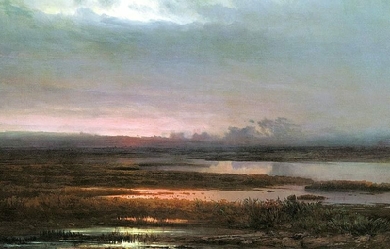
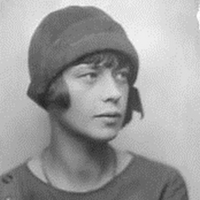
Léonie Fuller Adams (9 December 1899– 27 June 1988) was an American poet. She was appointed the seventh Poet Laureate Consultant in Poetry to the Library of Congress in 1948. Biography Adams was born in Brooklyn, New York, and raised in an unusually strict environment. She was not allowed on the subway until she was eighteen, and even then her father accompanied her. She studied at Barnard College where she was a contemporary and friend of roommate Margaret Mead. While still an undergraduate, she showed remarkable skill as a poet, and at this time her poems began to be published. In 1924, she became the editor of The Measure. Her first volume of poetry, titled Those Not Elect, was in 1925. In the spring of 1928, she had a brief affair with Edmund Wilson. Léonie apologized to Wilson for having “moped and quarreled” on the day she left for France. While in London, Leonie met H.D., who introduced her to several figures in the London literary scene; in Paris she was invited to tea by Gertrude Stein. At the beginning of 1929, when Wilson wrote to her that he was thinking of marrying another woman, Leonie wrote back that she had had a pregnancy and hinted that she had had a miscarriage, mentioning the need for a visit to a London doctor in October. Guilt over the pregnancy—both Wilson, and a former student, Judith Farr, reported that Léonie had a gift for making others feel guilty—combined with his heavy drinking, and indecision in other elements of his personal life led Wilson to a nervous collapse. Louise Bogan later revealed to him that Léonie’s pregnancy had been imaginary, and this caused a temporary rift between Bogan and Adams. In 1929 appeared her volume High Falcon. During the 1930s, she lived in the Ramapo Mountains near Hillburn, New York, and commuted to New York City to lecture on Victorian poetry at New York University. In 1930, she met writer and fellow New York University teacher William Troy. The two married in 1933. That same year she published This Measure. In 1935 she and her husband joined the faculty of Bennington College. She taught English at various other colleges and universities including Douglass College (then known as the New Jersey College for Women), the University of Washington, the Bread Loaf Writers’ Conference, Columbia University, and Sarah Lawrence College. The poets for whom Adams acted as a mentor included Louise Glück. Fantasy writer, poet and editor Lin Carter attended her Poetry Workshop while studying at Columbia University. Marcella Comès Winslow painted a portrait of Adams in 1947. In 1950, she received an honorary doctorate from the New Jersey College for Women. Adams’ Poems: A Selection won the 1954 Bollingen Prize. In a review of the book, Louise Bogan wrote: “Poems such as ”Companions of the Morass," “For Harvest,” “Grapes Making,” and “The Runner with the Lots” spring from and are indications of a poetic endowment as deep as it is rare.” In 1955, in a brief autobiography written for a biographical dictionary of modern literature, Adams threw a little light on her religious and political views: “My father... made me a childhood agnostic—I am now a Roman Catholic.... I am a very liberal democrat.” In 1988, she died at the age of 88 in New Milford, Connecticut. Poetic style Superficially, Léonie Adams’ style did not change greatly over her lifetime, but there was an initial shy wonder at the world that eventually became an intense and almost devotional lyricism. Her rich descriptions demonstrate great delicacy of perception and an exalted spirit. She bears comparison with Henry Vaughan and 17th century metaphysical poetry, especially in her near-religious ecstasy. In a recent critical commentary for the WOM-PO (Discussion of Women’s Poetry) website, poet Annie Finch provides a more postmodern reading of Adams as “a lush, sensual poet who directed her sensuality not towards other people but primarily towards the materials of poetry, towards syntax and symbol, diction and word-sound, in short, towards the language itself,” and goes on to say that “Adams’ poetry teases the balance between the incantatory and representational powers of poetic language. She uses the sounds of language as counterweights to her poems’ ostensible meanings, complicating the act of reading and calling into question a reader’s emotional responses.” Prizes and awards 1954: the Bollingen Prize for Poems: A Selection (1954) 1974: Academy Fellowship from the Academy of American Poets the Shelley Memorial Award fellowship from The Guggenheim Foundation grants from The National Council of the Arts and The National Institute of Arts and Letters, Poetry collections Those Not Elect, Robert M. McBride & Co, 1925; Reprint Services Corp, 1992, ISBN 978-0-7812-6913-1 High Falcon and Other Poems, John Day, New York, 1929. Midsummer, Ward Ritchie, 1929 This Measure, A. A. Knopf, 1933 Poems: A selection, Funk & Wagnalls, 1954 Edited and translated The Lyrics of Francois Villon, Limited Editions Club, New York, 1933. Children’s books “A casque for Amadis,” The Metropolitan Museum of Art, 1928. “The tale of Tenjin: or how a much-abused man became a saint,” The Metropolitan Museum of Art, 1928. Anthologies David Lehman, ed. (2006). “Magnificat in Little; The Horn; The Figurehead; Bell Tower”. The Oxford book of American poetry. Oxford University Press. ISBN 978-0-19-516251-6. David Cecil, Allen Tate, ed. (1958). “Country Summer; Caryatid; Early Waking; These Not Elect; Grapes Making”. Modern Verse in English. Taylor & Francis.
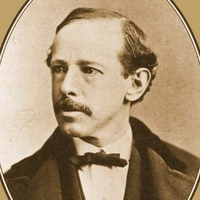
Horatio Alger Jr. (January 13, 1832 – July 18, 1899) was an American writer, best known for his many young adult novels about impoverished boys and their rise from humble backgrounds to lives of middle-class security and comfort through hard work, determination, courage, and honesty. His writings were characterized by the “rags-to-riches” narrative, which had a formative effect on the United States during the Gilded Age. All of Alger’s juvenile novels share essentially the same theme, known as the “Horatio Alger myth”: a teenage boy works hard to escape poverty. Often it is not hard work that rescues the boy from his fate but rather some extraordinary act of bravery or honesty. The boy might return a large sum of lost money or rescue someone from an overturned carriage. This brings the boy—and his plight—to the attention of a wealthy individual. Alger secured his literary niche in 1868 with the publication of his fourth book, Ragged Dick, the story of a poor bootblack’s rise to middle-class respectability. This novel was a huge success. His many books that followed were essentially variations on Ragged Dick and featured casts of stock characters: the valiant hard-working, honest youth, the noble mysterious stranger, the snobbish youth, and the evil, greedy squire. In the 1870s, Alger’s fiction was growing stale. His publisher suggested he tour the American West for fresh material to incorporate into his fiction. Alger took a trip to California, but the trip had little effect on his writing: he remained mired in the tired theme of “poor boy makes good.” The backdrops of these novels, however, became the American West rather than the urban environments of the northeastern United States. In the last decades of the 19th century, Alger’s moral tone coarsened with the change in boys’ tastes. Sensational thrills were wanted by the public. The Protestant work ethic had loosened its grip on the United States, and violence, murder, and other sensational themes entered Alger’s works. Public librarians questioned whether his books should be made available to the young. They were briefly successful, but interest in Alger’s novels was renewed in the first decades of the 20th century, and they sold in the thousands. By the time he died in 1899, Alger had published around a hundred volumes. He is buried in Natick, Massachusetts. Since 1947, the Horatio Alger Association of Distinguished Americans has awarded scholarships and prizes to deserving individuals. Biography Childhood: 1832–1847 Alger was born on January 13, 1832, in the New England coastal town of Chelsea, Massachusetts, the son of Horatio Alger Sr., a Unitarian minister, and Olive Augusta Fenno.He had many connections with the New England Puritan aristocracy of the early 19th century: He was the descendant of Pilgrim Fathers Robert Cushman, Thomas Cushman, and William Bassett. He was also the descendant of Sylvanus Lazell, a Minuteman and brigadier general in the War of 1812, and Edmund Lazell, a member of the Constitutional Convention in 1788.Horatio’s siblings Olive Augusta and James were born in 1833 and 1836, respectively. An invalid sister, Annie, was born in 1840, and a brother, Francis, in 1842. Alger was a precocious boy afflicted with myopia and asthma, but Alger Sr. decided early that his eldest son would one day enter the ministry, and, to that end, he tutored the boy in classical studies and allowed him to observe the responsibilities of ministering to parishioners.Alger began attending Chelsea Grammar School in 1842, but by December 1844 his father’s financial troubles had worsened considerably and, in search of a better salary, he moved the family to Marlborough, Massachusetts, an agricultural town 25 miles west of Boston, where he was installed as pastor of the Second Congregational Society in January 1845 with a salary sufficient to meet his needs. Horatio attended Gates Academy, a local preparatory school, and completed his studies at age 15. He published his earliest literary works in local newspapers. Harvard and early works: 1848–1864 In July 1848, Alger passed the Harvard entrance examinations and was admitted to the class of 1852. The 14-member, full-time Harvard faculty included Louis Agassiz and Asa Gray (sciences), Cornelius Conway Felton (classics), James Walker (religion and philosophy), and Henry Wadsworth Longfellow (belles-lettres). Edward Everett served as president. Alger’s classmate Joseph Hodges Choate described Harvard at this time as “provincial and local because its scope and outlook hardly extended beyond the boundaries of New England; besides which it was very denominational, being held exclusively in the hands of Unitarians”. Alger thrived in the highly disciplined and regimented Harvard environment, winning scholastic and other prestigious awards. His genteel poverty and less-than-aristocratic heritage, however, barred him from membership in the Hasty Pudding Club and the Porcellian Club. In 1849 he became a professional writer when he sold two essays and a poem to the Pictorial National Library, a Boston magazine. He began reading Walter Scott, James Fenimore Cooper, Herman Melville, and other modern writers of fiction and cultivated a lifelong love for Longfellow, whose verse he sometimes employed as a model for his own. He was chosen Class Odist and graduated with Phi Beta Kappa Society honors in 1852, eighth in a class of 88.Alger had no job prospects following graduation, and returned home. He continued to write, submitting his work to religious and literary magazines, with varying success. He briefly attended Harvard Divinity School in 1853, possibly to be reunited with a romantic interest, but left in November 1853 to take a job as an assistant editor at the Boston Daily Advertiser. He loathed editing and quit in 1854 to teach at The Grange, a boys’ boarding school in Rhode Island. When The Grange suspended operations in 1856, Alger found employment directing the 1856 summer session at Deerfield Academy.His first book, Bertha’s Christmas Vision: An Autumn Sheaf, a collection of short pieces, was published in 1856, and his second book, Nothing to Do: A Tilt at Our Best Society, a lengthy satirical poem, was published in 1857. He attended Harvard Divinity School from 1857 to 1860, and upon graduation, toured Europe. In the spring of 1861, he returned to a nation in the throes of the Civil War. Exempted from military service for health reasons in July 1863, he wrote in support of the Union cause and associated with New England intellectuals. He was elected an officer in the New England Historic Genealogical Society in 1863.His first novel, Marie Bertrand: The Felon’s Daughter, was serialized in New York Weekly in 1864, and his first boys’ book, Frank’s Campaign, was published by A. K. Loring in Boston the same year. Alger initially wrote for adult magazines, including Harper’s Magazine and Frank Leslie’s Illustrated Newspaper, but a friendship with William Taylor Adams, a boys’ author, led him to write for the young. Ministry: 1864–1866 On December 8, 1864, Alger was installed as a pastor with the First Unitarian Church and Society of Brewster, Massachusetts. Between ministerial duties, he organized games and amusements for boys in the parish, railed against smoking and drinking, and organized and served as president of the local chapter of the Cadets for Temperance. He submitted stories to Student and Schoolmate, a boys’ monthly magazine of moral writings, edited by William Taylor Adams and published in Boston by Joseph H. Allen. In September 1865 his second boys’ book, Paul Prescott’s Charge, was published and received favorable reviews. Child sexual abuse Early in 1866 a church committee of men was formed to investigate reports that Alger had sexually molested boys. Church officials reported to the hierarchy in Boston that Alger had been charged with “the abominable and revolting crime of gross familiarity with boys”. Alger denied nothing, admitted he had been imprudent, considered his association with the church dissolved, and left town. Alger sent Unitarian officials in Boston a letter of remorse, and his father assured them his son would never seek another post in the church. The officials were satisfied and decided no further action would be taken. New York City: 1866–1896 Alger relocated to New York City, abandoned forever any thought of a career in the church, and focused instead on his writing. He wrote “Friar Anselmo” at this time, a poem that tells of a sinning cleric’s atonement through good deeds. He became interested in the welfare of the thousands of vagrant children who flooded New York City following the Civil War. He attended a children’s church service at Five Points, which led to “John Maynard”, a ballad about an actual shipwreck on Lake Erie, which brought Alger not only the respect of the literati but a letter from Longfellow. He published two poorly received adult novels, Helen Ford and Timothy Crump’s Ward. He fared better with stories for boys published in Student and Schoolmate and a third boys’ book, Charlie Codman’s Cruise.In January 1867 the first of 12 installments of Ragged Dick appeared in Student and Schoolmate. The story, about a poor bootblack’s rise to middle-class respectability, was a huge success. It was expanded and published as a novel in 1868. It proved to be his best-selling work. After Ragged Dick he wrote almost entirely for boys, and he signed a contract with publisher Loring for a Ragged Dick Series. In spite of the series’ success, Alger was on financially uncertain ground and tutored the five sons of the international banker Joseph Seligman. He wrote serials for Young Israel and lived in the Seligman home until 1876. In 1875 Alger produced the serial Shifting for Himself and Sam’s Chance, a sequel to The Young Outlaw. It was evident in these books that Alger had grown stale. Profits suffered, and he headed West for new material at Loring’s behest, arriving in California in February 1877. He enjoyed a reunion with his brother James in San Francisco and returned to New York late in 1877 on a schooner that sailed around Cape Horn. He wrote a few lackluster books in the following years, rehashing his established themes, but this time the tales were played before a Western background rather than an urban one.In New York, Alger continued to tutor the town’s aristocratic youth and to rehabilitate boys from the streets. He was writing both urban and Western-themed tales. In 1879, for example, he published The District Messenger Boy and The Young Miner. In 1877, Alger’s fiction became a target of librarians concerned about sensational juvenile fiction. An effort was made to remove his works from public collections, but the debate was only partially successful, defeated by the renewed interest in his work after his death.In 1881, Alger informally adopted Charlie Davis, a street boy, and another, John Downie, in 1883; they lived in Alger’s apartment. In 1881, he wrote a biography of President James A. Garfield but filled the work with contrived conversations and boyish excitements rather than facts. The book sold well. Alger was commissioned to write a biography of Abraham Lincoln, but again it was Alger the boys’ novelist opting for thrills rather than facts.In 1882, Alger’s father died. Alger continued to produce stories of honest boys outwitting evil, greedy squires and malicious youths. His work appeared in hardcover and paperback, and decades-old poems were published in anthologies. He led a busy life with street boys, Harvard classmates, and the social elite. In Massachusetts, he was regarded with the same reverence as Harriet Beecher Stowe. He tutored with never a whisper of scandal. Last years: 1896–1899 In the last two decades of the 19th century, the quality of Alger’s books deteriorated, and his boys’ works became nothing more than reruns of the plots and themes of his past. The times had changed, boys expected more, and a streak of violence entered Alger’s work. In The Young Bank Messenger, for example, a woman is throttled and threatened with death—an episode that would never have occurred in his earlier work.He attended the theater and Harvard reunions, read literary magazines, and wrote a poem at Longfellow’s death in 1892. His last novel for adults, The Disagreeable Woman, was published under the pseudonym Julian Starr. He took pleasure in the successes of the boys he had informally adopted over the years, retained his interest in reform, accepted speaking engagements, and read portions of Ragged Dick to boys’ assemblies.His popularity—and income—dwindled in the 1890s. In 1896, he had what he called a “nervous breakdown”; he relocated permanently to his sister’s home in South Natick, Massachusetts.He suffered from bronchitis and asthma for two years. He died on July 18, 1899, at the home of his sister in Natick, Massachusetts. His death was barely noticed. He is buried in the family lot at Glenwood Cemetery, South Natick, Massachusetts.Before his death, Alger asked Edward Stratemeyer to complete his unfinished works. In 1901, Young Captain Jack was completed by Stratemeyer and promoted as Alger’s last work. Alger once estimated that he earned only $100,000 between 1866 and 1896; at his death he had little money, leaving only small sums to family and friends. His literary work was bequeathed to his niece, to two boys he had casually adopted, and to his sister Olive Augusta, who destroyed his manuscripts and his letters, according to his wishes.Alger’s works received favorable comments and experienced a resurgence following his death. Until the advent of the Jazz Age in the 1920s, he sold about seventeen to twenty million volumes. In 1926, however, reader interest plummeted, and his major publisher ceased printing the books altogether. Surveys in 1932 and 1947 revealed very few children had read or even heard of Alger. The first Alger biography was a heavily fictionalized account published in 1928 by Herbert R. Mayes, who later admitted the work was a fraud. Legacy Since 1947, the Horatio Alger Association of Distinguished Americans has bestowed an annual award on “outstanding individuals in our society who have succeeded in the face of adversity” and scholarships “to encourage young people to pursue their dreams with determination and perseverance”.In 1982 to mark his 150th birthday, the Children’s Aid Society held a celebration. Helen M. Gray, the executive director of the Horatio Alger Association of Distinguished Americans, presented a selection of Alger’s books to Philip Coltoff, the Children’s Aid Society executive director.A 1982 musical, Shine!, was based on Alger’s work, particularly Ragged Dick and Silas Snobden’s Office Boy.In 2015, many of Alger’s books were published as illustrated paperbacks and ebooks under the title “Stories of Success” by Horatio Alger. In addition, Alger’s books were offered as dramatic audiobooks by the same publisher. Style and themes Alger scholar Gary Scharnhorst describes Alger’s style as “anachronistic”, “often laughable”, “distinctive”, and “distinguished by the quality of its literary allusions”. Ranging from the Bible and William Shakespeare (half of Alger’s books contain Shakespearean references) to John Milton and Cicero, the allusions he employed were a testament to his erudition. Scharnhorst credits these allusions with distinguishing Alger’s novels from pulp fiction.Scharnhorst describes six major themes in Alger’s boys’ books. The first, the Rise to Respectability, he observes, is evident in both his early and his late books, notably Ragged Dick, whose impoverished young hero declares, “I mean to turn over a new leaf, and try to grow up 'spectable.” His virtuous life wins him not riches but, more realistically, a comfortable clerical position and salary. The second major theme is Character Strengthened Through Adversity. In Strong and Steady and Shifting for Himself, for example, the affluent heroes are reduced to poverty and forced to meet the demands of their new circumstances. Alger occasionally cited the young Abe Lincoln as a representative of this theme for his readers. The third theme is Beauty versus Money, which became central to Alger’s adult fiction. Characters fall in love and marry on the basis of their character, talents, or intellect rather than the size of their bank accounts. In The Train Boy, for example, a wealthy heiress chooses to marry a talented but struggling artist, and in The Erie Train Boy a poor woman wins her true love despite the machinations of a rich, depraved suitor. Other major themes include the Old World versus the New. All of Alger’s novels have similar plots: a boy struggles to escape poverty through hard work and clean living. However, it is not always the hard work and clean living that rescue the boy from his situation, but rather a wealthy older gentleman, who admires the boy as a result of some extraordinary act of bravery or honesty that the boy has performed. For example, the boy rescues a child from an overturned carriage or finds and returns the man’s stolen watch. Often the older man takes the boy into his home as a ward or companion and helps him find a better job, sometimes replacing a less honest or less industrious boy. According to Scharnhorst, Alger’s father was “an impoverished man” who defaulted on his debts in 1844. His properties around Chelsea were seized and assigned to a local squire who held the mortgages. Scharnhorst speculates this episode in Alger’s childhood accounts for the recurrent theme in his boys’ books of heroes threatened with eviction or foreclosure and may account for Alger’s “consistent espousal of environmental reform proposals”. Scharnhorst writes, “Financially insecure throughout his life, the younger Alger may have been active in reform organizations such as those for temperance and children’s aid as a means of resolving his status-anxiety and establish his genteel credentials for leadership.”Alger scholar Edwin P. Hoyt notes that Alger’s morality “coarsened” around 1880, possibly influenced by the Western tales he was writing, because “the most dreadful things were now almost casually proposed and explored”. Although he continued to write for boys, Alger explored subjects like violence and “openness in the relations between the sexes and generations”; Hoyt attributes this shift to the decline of Puritan ethics in America.Scholar John Geck notes that Alger relied on “formulas for experience rather than shrewd analysis of human behavior”, and that these formulas were “culturally centered” and “strongly didactic”. Although the frontier society was a thing of the past during Alger’s career, Geck contends that “the idea of the frontier, even in urban slums, provides a kind of fairy tale orientation in which a Jack mentality can be both celebrated and critiqued”. He claims that Alger’s intended audience were youths whose “motivations for action are effectively shaped by the lessons they learn”. Geck notes that perception of the “pluck” characteristic of an Alger hero has changed over the decades. During the Jazz Age and the Great Depression, “the Horatio Alger plot was viewed from the perspective of Progressivism as a staunch defense of laissez-faire capitalism, yet at the same time criticizing the cutthroat business techniques and offering hope to a suffering young generation during the Great Depression”. By the Atomic Age, however “Alger’s hero was no longer a poor boy who, through determination and providence rose to middle-class respectability. He was instead the crafty street urchin who through quick wits and luck rose from impoverishment to riches”. Geck observes that Alger’s themes have been transformed in modern America from their original meanings into a male Cinderella myth and are an Americanization of the traditional Jack tales. Each story has its clever hero, its “fairy godmother”, and obstacles and hindrances to the hero’s rise. “However”, he writes, “the true Americanization of this fairy tale occurs in its subversion of this claiming of nobility; rather, the Alger hero achieves the American Dream in its nascent form, he gains a position of middle-class respectability that promises to lead wherever his motivation may take him”. The reader may speculate what Cinderella achieved as Queen and what an Alger hero attained once his middle-class status was stabilized, and "[i]t is this commonality that fixes Horatio Alger firmly in the ranks of modern adaptors of the Cinderella myth". Personal life Scharnhorst writes that Alger “exercised a certain discretion in discussing his probable homosexuality” and was known to have mentioned his sexuality only once after the Brewster incident. In 1870 the elder Henry James wrote that Alger “talks freely about his own late insanity—which he in fact appears to enjoy as a subject of conversation”. Although Alger was willing to speak to James, his sexuality was a closely guarded secret. According to Scharnhorst, Alger made veiled references to homosexuality in his boys’ books, and these references, Scharnhorst speculates, indicate Alger was “insecure with his sexual orientation”. Alger wrote, for example, that it was difficult to distinguish whether Tattered Tom was a boy or a girl and in other instances he introduces foppish, effeminate, lisping “stereotypical homosexuals” who are treated with scorn and pity by others. In Silas Snobden’s Office Boy, a kidnapped boy disguised as a girl is threatened with being sent to the “insane asylum” if he should reveal his actual sex. Scharnhorst believes Alger’s desire to atone for his “secret sin” may have “spurred him to identify his own charitable acts of writing didactic books for boys with the acts of the charitable patrons in his books who wish to atone for a secret sin in their past by aiding the hero”. Scharnhorst points out that the patron in Try and Trust, for example, conceals a “sad secret” from which he is redeemed only after saving the hero’s life.Alan Trachtenberg, in his introduction to the Signet Classic edition of Ragged Dick (1990), points out that Alger had tremendous sympathy for boys and discovered a calling for himself in the composition of boys’ books. “He learned to consult the boy in himself”, Trachtenberg writes, “to transmute and recast himself—his genteel culture, his liberal patrician sympathy for underdogs, his shaky economic status as an author, and not least, his dangerous erotic attraction to boys—into his juvenile fiction”. He observes that it is impossible to know whether Alger lived the life of a secret homosexual, "[b]ut there are hints that the male companionship he describes as a refuge from the streets—the cozy domestic arrangements between Dick and Fosdick, for example—may also be an erotic relationship". Trachtenberg observes that nothing prurient occurs in Ragged Dick but believes the few instances in Alger’s work of two boys touching or a man and a boy touching “might arouse erotic wishes in readers prepared to entertain such fantasies”. Such images, Trachtenberg believes, may imply “a positive view of homoeroticism as an alternative way of life, of living by sympathy rather than aggression”. Trachtenberg concludes, “in Ragged Dick we see Alger plotting domestic romance, complete with a surrogate marriage of two homeless boys, as the setting for his formulaic metamorphosis of an outcast street boy into a self-respecting citizen”. References Wikipedia—https://en.wikipedia.org/wiki/Horatio_Alger
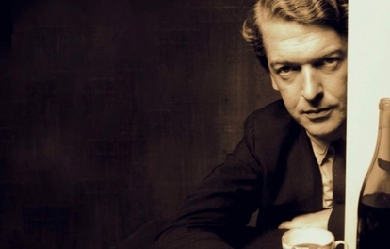
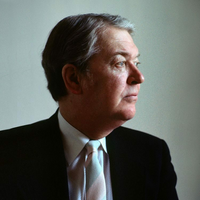
Sir Kingsley William Amis, CBE (16 April 1922– 22 October 1995) was an English novelist, poet, critic, and teacher. He wrote more than 20 novels, six volumes of poetry, a memoir, various short stories, radio and television scripts, along with works of social and literary criticism. According to his biographer, Zachary Leader, Amis was “the finest English comic novelist of the second half of the twentieth century.” He is the father of British novelist Martin Amis. In 2008, The Times ranked Kingsley Amis thirteenth on their list of the 50 greatest British writers since 1945. Life and career Kingsley Amis was born in Clapham, south London, the son of William Robert Amis, a mustard manufacturer’s clerk in the City of London and his wife, Rosa Annie (née Lucas). He was raised in Norbury– in his later estimation "not really a place, it’s an expression on a map [-] really I should say I came from Norbury station". He was educated at the City of London School on a scholarship, after his first year, and in April 1941 was admitted to St. John’s College, Oxford, also on a scholarship, where he read English. It was there that he met Philip Larkin, with whom he formed the most important friendship of his life. While at Oxford, in June 1941, Amis joined the Communist Party of Great Britain (but later broke with communism in 1956, after Soviet leader Nikita Khrushchev denounced former Soviet premier Joseph Stalin in his speech On the Cult of Personality and Its Consequences). After only a year, in July 1942, he was called up for national service. After serving in the Royal Corps of Signals in the Second World War, Amis returned to Oxford in October 1945 to complete his degree. Although he worked hard and earned in 1947 a first in English, he had by then decided to give much of his time to writing. In 1946 he met Hilary Bardwell; they married in 1948 after she became pregnant with their first child, Philip. Amis initially arranged for her to have a back-street abortion, but changed his mind, fearing for her safety. He became a lecturer in English at the University of Wales, Swansea (1949–1961). Two other children followed: Martin in August 1949 and Sally in January 1954. Days after Sally’s birth, Amis’s first novel Lucky Jim was published to great acclaim; critics saw it as having caught the flavour of Britain in the 1950s, ushering in a new style of fiction. By 1972, in addition to impressive sales in Britain, one and a quarter million paperback copies had been sold in the United States, and it was eventually translated into twenty languages, including Polish, Hebrew, Korean, and Serbo-Croat. The novel won the Somerset Maugham Award for fiction and Amis was associated with the writers labelled the Angry Young Men. Lucky Jim was one of the first British campus novels, setting a precedent for later generations of writers such as Malcolm Bradbury, David Lodge, Tom Sharpe and Howard Jacobson. As a poet, Amis was associated with The Movement. During 1958–1959 he made the first of two visits to the United States, where he was Visiting Fellow in Creative Writing at Princeton University and a visiting lecturer in other northeastern universities. On returning to Britain, he fell into a rut, and he began looking for another post; after thirteen years at Swansea, Amis became a fellow of Peterhouse, Cambridge (1961–1963). He regretted the move within a year, finding Cambridge an academic and social disappointment and resigned in 1963, intent on moving to Majorca; he went no farther than London. In 1963, Hilary discovered Amis’s love affair with novelist Elizabeth Jane Howard. Hilary and Amis separated in August, and he went to live with Howard. He divorced Hilary in 1965 and married Howard the same year. In 1968 he moved with Howard to Lemmons, a house in Barnet, north London. She and Amis divorced in 1983. In his last years, Amis shared a house with his first wife Hilary and her third husband, Alastair Boyd, 7th Baron Kilmarnock. Martin wrote the memoir Experience about the life, charm, and decline of his father. Amis was knighted in 1990. In August 1995 he fell, suffering a suspected stroke. After apparently recovering, he worsened, was re-admitted to hospital, and died on 22 October 1995 at St Pancras Hospital, London. He was cremated; his ashes are at Golders Green Crematorium. Literary work Amis is chiefly known as a comedic novelist of mid– to late-20th-century British life, but his literary work extended into many genres—poetry, essays and criticism, short stories, food and drink writing, anthologies, and a number of novels in genres such as science fiction and mystery. His career initially developed in a pattern which was the inverse of that followed by his close friend Philip Larkin. Before becoming known as a poet, Larkin had published two novels; Amis, on the other hand, originally wished to be a poet, and turned to writing novels only after publishing several volumes of verse. He continued throughout his career to write poetry which is known for its typically straightforward and accessible style, yet which often masks a nuance of thought, for example, in “Bookshop Idyll” or “Against Romanticism”, just as it does in his novels. Amis’s first novel, Lucky Jim (1954), is perhaps his most famous, satirizing the high-brow academic set of an unnamed university, seen through the eyes of its protagonist, Jim Dixon, as he tries to make his way as a young lecturer of history. The novel was perceived by many as part of the Angry Young Men movement of the 1950s which reacted against the stultification of conventional British life, though Amis never encouraged this interpretation. Amis’s other novels of the 1950s and early 1960s similarly depict situations from contemporary British life, often drawn from Amis’s own experiences. That Uncertain Feeling (1955) centres on a young provincial librarian (again perhaps with reference to Larkin, librarian at Hull) and his temptation towards adultery; I Like It Here (1958) presents Amis’s contemptuous view of “abroad” and followed upon his own travels on the Continent with a young family; Take a Girl Like You (1960) steps away from the immediately autobiographical, but remains grounded in the concerns of sex and love in ordinary modern life, tracing the courtship and ultimate seduction of the heroine Jenny Bunn by a young schoolmaster, Patrick Standish. With The Anti-Death League (1966), Amis begins to show some of the experimentation– with content, if not with style– which would mark much of his work in the 1960s and 70s. Amis’s departure from the strict realism of his early comedic novels is not so abrupt as might first appear. He had avidly read science fiction since a boy, and had developed that interest into the Christian Gauss Lectures of 1958, while visiting Princeton University. The lectures were published in that year as New Maps of Hell: A Survey of Science Fiction, a serious but light-handed treatment of what the genre had to say about man and society. Amis was particularly enthusiastic about the dystopian works of Frederik Pohl and C. M. Kornbluth, and in New Maps of Hell coined the term “comic inferno” to describe a type of humorous dystopia, particularly as exemplified in the works of Robert Sheckley. Amis further displayed his devotion to the genre in editing, with the Sovietologist Robert Conquest, the science fiction anthology series Spectrum I–V, which drew heavily upon 1950s numbers of the magazine Astounding Science Fiction. Though not explicitly science fiction, The Anti-Death League takes liberties with reality not found in Amis’s earlier novels, and introduces a speculative bent into his fiction, one which would continue to develop in other of his genre novels, such as The Green Man (1969) (mystery/horror) and The Alteration (1976) (alternative history). Much of this speculation was about the improbable existence of any benevolent deity involved in human affairs. In The Anti-Death League, The Green Man, The Alteration and elsewhere, including poems such as “The Huge Artifice: an interim assessment” and “New Approach Needed”, Amis showed frustration with a God who could lace the world with such cruelty and injustice, and championed the preservation of ordinary human happiness– in family, in friendships, in physical pleasure– against the demands of any cosmological scheme. The matter of Amis’s religious views is perhaps ultimately summed up in his response, reported in his Memoirs, to the Russian poet Yevgeny Yevtushenko’s question, in his broken English: “You atheist?” Amis replied, “It’s more that I hate Him.” During this time, Amis had not turned completely away from the comedic realism of Lucky Jim and Take a Girl Like You. I Want It Now (1968) and Girl, 20 (1971) both depict the “swinging” atmosphere of London in the late '60s, in which Amis certainly participated, though neither book is strictly autobiographical. Girl, 20, for instance, is framed in the world of classical (and pop) music, of which Amis was not a part—the book’s relatively impressive command of musical terminology and opinion shows both Amis’s amateur devotion to music and the almost journalistic capacity of his intelligence to take hold of a subject which interested him. That intelligence is similarly on display in, for instance, the presentation of ecclesiastical matters in The Alteration, when Amis was neither a Roman Catholic nor, for that matter, a devotee of any Church. Throughout the 1950s, '60s, and '70s, Amis was regularly producing essays and criticism, principally for journalistic publication. Some of these pieces were collected in 1968's What Became of Jane Austen? and Other Essays, in which Amis’s wit and literary and social opinions were on display ranging over books such as Colin Wilson’s The Outsider (panned), Iris Murdoch’s debut novel Under the Net (praised), or William Empson’s Milton’s God (inclined to agree with). Amis’s opinions on books and people tended to appear (and often, be) conservative, and yet, as the title essay of the collection shows, he was not merely reverent of “the classics” and of traditional morals, but was more disposed to exercise his own rather independent judgment in all things. Amis became associated with Ian Fleming’s James Bond novels, which he greatly admired, in the late 1960s, when he began composing critical works connected with the fictional spy, either under a pseudonym or uncredited. In 1965, he wrote the popular The James Bond Dossier under his own name. That same year, he wrote The Book of Bond, or, Every Man His Own 007, a tongue-in-cheek how-to manual about being a sophisticated spy, under the pseudonym “Lt Col. William ('Bill’) Tanner”, Tanner being M’s Chief of Staff in many of Fleming’s Bond novels. In 1968 Amis wrote Colonel Sun, which was published under the pseudonym “Robert Markham”. Amis’s literary style and tone changed significantly after 1970, with the possible exception of The Old Devils, a Booker Prize winner. Several critics accused him of being old fashioned and misogynistic. His Stanley and the Women, an exploration of social sanity, could be said to instance these traits. Others said that his output lacked the humanity, wit, and compassion of earlier efforts. This period also saw Amis the anthologist, a role in which his wide knowledge of all kinds of English poetry was on display. The New Oxford Book of Light Verse (1978), which he edited, was a revision of the original volume done by W. H. Auden. Amis took the anthology in a markedly new direction: Auden had interpreted light verse to include “low” verse of working-class or lower-class origin, regardless of subject matter, while Amis defined light verse as essentially light in tone, though not necessarily simple in composition. The Amis Anthology (1988), a personal selection of his favourite poems, grew out of his work for a London newspaper, in which he selected a poem daily and presented it with a brief introduction. Amis was shortlisted for the Booker Prize three times in his writing career for Ending Up (1974), Jake’s Thing (1978), and finally winning the prize for The Old Devils in 1986. In 2008, The Times ranked Kingsley Amis thirteenth on their list of the 50 greatest British writers since 1945. Personal life and political views As a young man at Oxford, Amis briefly joined the Communist Party. He left in 1956. He later described this stage of his political life as “the callow Marxist phase that seemed almost compulsory in Oxford”. Amis remained nominally on the Left for some time after the war, declaring in the 1950s that he would always vote for the Labour Party. But he eventually moved further right, a development he discussed in the essay “Why Lucky Jim Turned Right” (1967); his conservatism and anti-communism can be seen in such later works of his as the dystopian novel Russian Hide and Seek (1980). In 1967, Amis, Robert Conquest, John Braine and several other right-wing authors signed a controversial letter to The Times entitled “Backing for U.S. Policies in Vietnam”, supporting the US government in the Vietnam War. He spoke at the Adam Smith Institute, arguing against government subsidy to the arts. Amis was by his own admission and as revealed by his biographers a serial adulterer for much of his life. This was one of the main contributory factors in the breakdown of his first marriage. A famous photograph of a sleeping Amis on a Yugoslav beach shows the slogan (written by wife Hilly) on his back "1 Fat Englishman– I fuck anything". In one of his memoirs, Amis wrote: “Now and then I become conscious of having the reputation of being one of the great drinkers, if not one of the great drunks, of our time”. He suggests that this is the result of a naïve tendency on the part of his readers to apply the behaviour of his characters to himself. This was disingenuous; the fact was that he enjoyed drink, and spent a good deal of his time in pubs. Hilary Rubinstein, who accepted Lucky Jim for publication at Victor Gollancz, commented: “I doubted whether Jim Dixon would have gone to the pub and drunk ten pints of beer... I didn’t know Kingsley very well, you see.” Clive James comments: “All on his own, he had the weekly drinks bill of a whole table at the Garrick Club even before he was elected. After he was, he would get so tight there that he could barely make it to the taxi.” Amis was, however, adamant in his belief that inspiration did not come from a bottle: “Whatever part drink may play in the writer’s life, it must play none in his or her work.” That this was certainly the case is attested to by Amis’s highly disciplined approach to writing. For 'many years’, Amis imposed a rigorous daily schedule upon himself in which writing and drinking were strictly segregated. Mornings were devoted to writing with a minimum daily output of 500 words. The drinking would only begin around lunchtime when this output had been achieved. Amis’s prodigious output would not have been possible without this kind of self-discipline. Nevertheless, according to Clive James, Amis reached a turning point when his drinking ceased to be social, and became a way of dulling his remorse and regret at his behaviour toward Hilly. “Amis had turned against himself deliberately... it seems fair to guess that the troubled grandee came to disapprove of his own conduct.” His friend Christopher Hitchens said: “The booze got to him in the end, and robbed him of his wit and charm as well as of his health.” Amis had a somewhat complex relationship with anti-Semitism, which he sometimes expressed but also disliked and opposed. He occasionally speculated on the historically received, and commonly accepted, stereotypes attributed to Jewish character. Anti-semitism was sometimes present in his conversations and letters written to friends and associates: “The great Jewish vice is glibness, fluency... also possibly just bullshit, as in Marx, Freud, Marcuse.” Or, “Chaplin is a horse’s arse. He’s a Jeeeew you see, like the Marx Brothers, like Danny Kaye.” It is a minor theme in his novel about a paranoid schizophrenic, Stanley and the Women. As for the cultural complexion of America, Amis had this to say: “I’ve finally worked out why I don’t like Americans... Because everyone there is either a Jew or a hick.” Amis himself described his anti-Semitism as being “Very mild ...” Family Amis’s first marriage, of fifteen years, was to Hilary Bardwell, daughter of a civil servant, by whom he had two sons and one daughter: Philip Amis, a graphics designer; Martin Amis, a novelist; and Sally Amis, who died in 2000. Amis was married a second time, to the novelist Elizabeth Jane Howard from 1965 to 1983, with whom he had no children. At the end of his second marriage, he went to live with his ex-wife Hilary and her third husband, in a deal brokered by their two sons Philip and Martin, so that he could be cared for until his death. Partial bibliography Poetry * 1947 Bright November * 1953 A Frame of Mind * 1954 Poems: Fantasy Portraits * 1956 A Case of Samples: Poems 1946–1956 * 1962 The Evans County * 1968 A Look Round the Estate: Poems, 1957–1967 * 1979 Collected Poems 1944–78 Fiction Novels * c.1948 The Legacy (unpublished) * 1954 Lucky Jim * 1955 That Uncertain Feeling * 1958 I Like It Here * 1960 Take a Girl Like You * 1963 One Fat Englishman * 1965 The Egyptologists (with Robert Conquest) * 1966 The Anti-Death League * 1968 Colonel Sun: a James Bond Adventure (pseud. Robert Markham) * 1968 I Want It Now * 1969 The Green Man * 1971 Girl, 20 * 1973 The Riverside Villas Murder * 1974 Ending Up * 1975 The Crime of the Century * 1976 The Alteration * 1978 Jake’s Thing * 1980 Russian Hide-and-Seek * 1984 Stanley and the Women * 1986 The Old Devils * 1988 Difficulties with Girls * 1990 The Folks That Live on the Hill * 1991 We Are All Guilty * 1992 The Russian Girl * 1994 You Can’t Do Both * 1995 The Biographer’s Moustache * c.1995 Black and White (unfinished) Short fiction collections * 1962 My Enemy’s Enemy * 1980 Collected Short Stories * 1991 Mr Barrett’s Secret and Other Stories Other short fiction 1960 “Hemingway in Space” (short story), Punch December 1960 Non-fiction * 1957 Socialism and the Intellectuals, a Fabian Society pamphlet * 1960 New Maps of Hell: A Survey of Science Fiction * 1965 The James Bond Dossier * 1965 The Book of Bond, or Every Man His Own 007 (pseud. Lt.-Col William ('Bill’) Tanner) * 1970 What Became of Jane Austen?, and Other Questions * 1972 On Drink * 1974 Rudyard Kipling and His World * 1983 Everyday Drinking * 1984 How’s Your Glass? * 1990 The Amis Collection * 1991 Memoirs * 1997 The King’s English: A Guide to Modern Usage (name in part a pun as he was sometimes called “Kingers” or “The King” by friends and family, as told by his son Martin in his memoir Experience) * 2001 The Letters of Kingsley Amis, Edited by Zachary Leader * 2008 Everyday Drinking: The Distilled Kingsley Amis, Introduction by Christopher Hitchens (an omnibus edition of On Drink, Everyday Drinking and How’s Your Glass?) Editor * 1967 Spectrum V: a fifth science fiction anthology (ed. with Robert Conquest) * 1978 The New Oxford Book of Light Verse (ed.) Poets in The Amis Anthology: A Personal Choice of English Verse (1988) Richard Aldington– Kenneth Allott– Matthew Arnold– Kenneth Ashley– W. H. Auden– William Barnes– Oliver Bayley– Hilaire Belloc– John Betjeman– Laurence Binyon– William Blake– Edmund Blunden– Rupert Brooke– Robert Browning– Robert Burns– Thomas Campbell– Thomas Campion– G. K. Chesterton– Hartley Coleridge– Robert Conquest– W. J. Cory– John Davidson– Donald Davie– C. Day Lewis– Walter de la Mare– Ernest Dowson– Michael Drayton– Lawrence Durrell– Jean Elliot– George Farewell– James Elroy Flecker– Thomas Ford– Roy Fuller– Robert Graves– Thomas Gray– Fulke Greville– Heath– Reginald Heber– Felicia Dorothea Hemans– W. E. Henley– George Herbert– Ralph Hodgson– Thomas Hood– Teresa Hooley– Gerard Manley Hopkins– A. E. Housman– Henry Howard, Earl of Surrey– T. E. Hulme– Leigh Hunt– Elizabeth Jennings– Samuel Johnson– John Keats– Henry King– Charles Kingsley– Rudyard Kipling– Philip Larkin– Henry Wadsworth Longfellow– John Lydgate– H. F. Lyte– Louis MacNeice– Andrew Marvell– John Masefield– Alice Meynell– Harold Monro– William Morris– Edwin Muir– Henry Newbolt– Alfred Noyes– Wilfred Owen– Thomas Love Peacock– George Peele– Alexander Pope– Frederic Prokosch– Walter Ralegh– John Crowe Ransom– Christina Rossetti– Siegfried Sassoon– John Skelton– Robert Southey– Edmund Spenser– Sir John Squire– Robert Louis Stevenson– John Suckling– Algernon Charles Swinburne– George Szirtes– Alfred, Lord Tennyson– Dylan Thomas– Edward Thomas– R. S. Thomas– Francis Thompson– Anthony Thwaite– Chidiock Tichborne– Aurelian Townsend– W. J. Turner– Oscar Wilde– John Wilmot, Lord Rochester– Roger Woddis– Charles Wolfe– William Wordsworth– William Butler Yeats– Andrew Young References Wikipedia—https://en.wikipedia.org/wiki/Kingsley_Amis
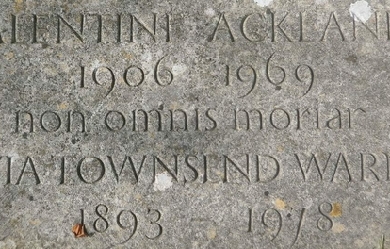
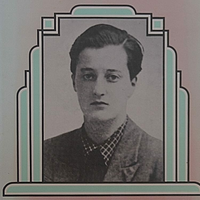
Valentine Ackland (20 May 1906– 9 November 1969) was an English poet, an important figure in the emergence of modernism in twentieth-century British poetry. Life Ackland was born Mary Kathleen Macrory Ackland to Robert Craig Ackland and his wife Ruth Kathleen (née Macrory), and nicknamed “Molly” by her family. With no sons born to the family, Valentine’s father, a West End London dentist, worked at making a symbolic son of Molly, teaching her to shoot rifles and to box. This attention to Molly made her sister Joan Alice Elizabeth (b. 1898) immensely jealous. Older by eight years, Joan psychologically tormented and physically abused Molly as a way of unleashing her jealousy and anger. Molly received an Anglo-Catholic upbringing in Norfolk and a convent school education in London. In 1925 at the age of nineteen, she impetuously married Richard Turpin, a homosexual youth who was unable to consummate their marriage. Upon her marriage, she was also received into the Catholic church, a religion that she later abandoned, returned to, and then abandoned again in the last decade of her life. In less than a year, she had her marriage to Turpin annulled, and, despite numerous pleas from her family and much psychological pressure from them, never returned to a serious relationship with a man again. Alert to social mores of her day, she became aware of societal patterns of male privilege and female submission set about challenging the female gender identifications expected of her. She took to wearing men’s clothing, cut her hair in a short style called the Eton crop, and was at times mistaken for a handsome young boy. She changed her name to the androgynous Valentine Ackland when she decided to become a serious poet in the late 1920s. Her poetry appeared in British and American literary journals during the 1920s to the 1940s, but Ackland deeply regretted that she never became a noted and widely read poet. In this regard, much of her poetry was published posthumously, and she received little attention from critics until a revival of interest in her work in the 1970s. In 1930, Ackland was introduced to the short story writer and novelist Sylvia Townsend Warner, with whom she had a lifelong relationship, albeit tumultuous at times given Ackland’s increasing alcoholism and infidelities. Warner was twelve years older than Ackland, and the two lived together until Ackland’s death from breast cancer in 1969. Warner went on to outlive Ackland by nine years, dying in 1978. The pair were together for thirty-nine years. Ackland’s reflections upon her relationship with Warner and the former’s long affair with American heiress and writer Elizabeth Wade White (1908–1994), were posthumously published in For Sylvia: An Honest Account (1985). Ackland was a highly emotional woman prone to numerous self-doubts and shifts in emotions and intellectual interests. She was responsible for involving Warner in membership in the Communist Party in the 1930s and in 1937 she visited Valencia and Benicàssim within the framework of the Spanish Civil War as well as numerous socialist and pacifist activities. The two women’s involvement in the Communist Party came under investigation by the British government in the late 1930s and remained an open file until 1957, when the investigation was halted. Ackland and Warner supported the Republican cause during the Spanish Civil War, and Ackland criticised the British government for its indifference to the “sufferings of the Spanish people at the grass-roots level” in her poem "Instructions from England, 1936". Note nothing of why or how, enquire no deeper than you need into what set these veins on fire, Note simply that they bleed. After World War II, Ackland turned her attention to confessional poetry and a memoir concerning her relationship with Warner and its many emotional issues as Ackland pursued involvements with other women. At first, Warner was tolerant with her younger lover’s dalliances, but the seriousness and length of Ackland’s relationship with Elizabeth Wade White was distressing to Warner and also pushed her relationship with Ackland to the edge. Ackland’s distresses at loving two women simultaneously and of endeavouring to balance her feelings for each woman with the responsibilities and commitments of her primary relationship with Warner are presented openly in Ackland’s poetry and in her memoir of this period. Ackland was struggling with additional doubts and conflicts during this period as well. She continued to battle her alcoholism, and she was undergoing shifts in her political and religious alliances. Doubts about her sexual identity and her identity as a poet as well as about her Christian faith and her political convictions are evident in her poetry. In 1934, Ackland and Warner produced a volume of poetry, “Whether a Dove or a Seagull” that was an unusual and democratic experiment in writing as none of the poems is ascribed to either author. The volume was also an attempt by Warner to introduce Ackland to publication since Warner had an already established reputation as a novelist, and her work was widely read in the 1930s. The volume was controversial for its frank discussion of lesbianism at a time and in a society in which lesbianism was regarded as deviant and immoral behaviour. In 1937, Ackland and Warner moved from rural Dorset to a house near Dorchester. Both became involved with Communist ideals and issues, with Ackland writing a column called “Country Dealings” concerning rural poverty for the “Daily Worker” and the “Left Review.” In 1939, the two women attended the American Writers Congress in New York City to consider the loss of democracy in Europe and returned when World War II broke out. Ackland’s poetry of this period attempted to capture the political dynamics she saw at work, but she had a difficult time as a poet mastering the craft of combining political polemics with her natural tendency toward lyrical expression. In a similar vein, her distress over the loss of democracy in Europe became a broader identification with Existentialism and the sense that the human condition itself was hopeless. Death Ackland died on 9 November 1969 from breast cancer that had metastasised to her lungs. She was buried together with Sylvia Townsend Warner in St Nicholas’s churchyard at Chaldon Herring with the inscription from Horace Non omnis moriar (Ode III.30, “I shall not wholly die”) on her gravestone. Critical assessment Ackland’s poetry—largely neglected after the 1940s—came into a resurgence of interest with the emergence of both women’s studies and of lesbian literature. Contemporary critical reaction finds much to value in Ackland’s poetry and confessional writings, which are of historical interest to the development of self-reflective, modernist poetry, and to the political and cultural issues of the 1930s and 1940s. One example of a recent critical analysis is Wendy Milford’s 1988 study, This Narrow Place: Sylvia Townsend Warner and Valentine Ackland. With regard to her self-reflection as a poet, Ackland exhibits themes and explorations similar to poets like Sylvia Plath and Anne Sexton. Of interest, too, is Ackland’s explorations of terminal illness as her life was drawing to a close from cancer. In her later years, Ackland turned from Catholicism to Quaker beliefs and also to involvement with issues of environmentalism. In overall assessment, Milford considers the two-minds at work in Ackland’s work. She cites as examples Ackland’s focus on optimism and dread, the longing for emotional closeness and the fear of intimacy, self-assertion and self-negation, the search for privacy and solitude amidst the longing for connection and social acceptance as a lesbian and as a noteworthy poet. In this regard, Ackland shares much thematically—though not in artistic achievement—with metaphysical poets like John Donne and Philip Larkin in the effort to see personal experience from multiple perspectives and never fully resting with one perspective or another. A contemporary examination of Ackland’s poetry and essays was published by Carcanet Press in 2008 titled Journey from Winter: Selected Poems. The volume is edited by Frances Bingham, who also provides a contextual and critical introduction. Bibliography * Whether a Dove or a Seagull (1934) volume of poetry with Sylvia Townsend Warner * Twenty-Eight Poems (1957) privately printed in London * Later Poems by Valentine Ackland (1970) * The Nature of the Moment (1973) * Further Poems of Valentine Ackland (1978) * For Sylvia: An Honest Account (1985) a memoir of Ackland’s relationship with Sylvia Townsend Warner * This Narrow Place: Sylvia Townsend Warner and Valentine Ackland 1931–1951, by Wendy Mulford (1988) * Jealousy in Connecticut, by Susanna Pinney (1998) References Wikipedia—https://en.wikipedia.org/wiki/Valentine_Ackland
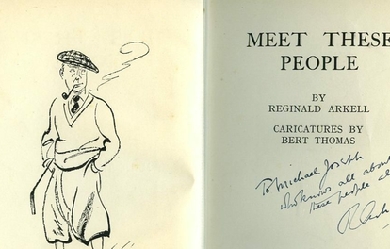
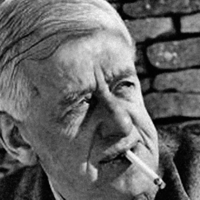
Reginald Arkell (1882–1959) was a British script writer and comic novelist who wrote many musical plays for the London theatre. The most popular of those was an adaptation of the spoof history book 1066 and All That: 1066—and all that: A Musical Comedy based on that Memorable History by Sellar and Yeatman. He was the author of A Cottage in the Country and the Green Fingers series of garden verse. Arkell was born on 14 October 1882 at Lechlade, Gloucestershire, England, was educated at Burford Grammar School and trained as a journalist. He married actress Elizabeth Evans in 1912. During the First World War he served with the King’s Own Yorkshire Light Infantry and The Norfolk Regiment. Arkell died on 1 May 1959 at Cricklade, England. Works * The Round House (1958) (novel) * Charley Moon (1953) (novel) Published by Michael Joseph Ltd. * “Trumpets Over Merriford” (1955), American title: The Miracle Of Merriford (1956) (novel) * Collected Green Fingers (1956) (poems) * Come to the ball; or, Harlequin (1951) (adaptation of Johann Strauss II’s Die Fledermaus) * Old Herbaceous (1950, republished 2002) * Green fingers Again (1942) (poems) * War Rumours (1939) (verse, illustrated by Edgar Norfield) * Percy Ponsonby (1939) (TV series) * 1066 And All That (1939) (TV version) * The Street Singer or Interval for Romance (1937) (film musical which starred Arthur Tracy) * Smash and Grab (1937) (film) * Green fingers, and other poems (1934) (includes Roses at Owlpen) * The Last Waltz (1936) (film of the musical comedy) * 1066 And All That (1935) (revue) * A Kingdom for a Cow (1935) (adaptation of Kurt Weill’s operetta Der Kuhhandel) * Playing the Games (1935) (humour) * Bridge Without Sighs (1934) (A Harmless Handbook to the game, written in rhyme) * Richard Jefferies (1933) (biography) * Winter Sportings (1929) * Meet These People (1928) - Poetry with caricatures by Bert Thomas. Published by Herbert Jenkins. * Columbine– A Fantasy of Summertime (1928) (adaptation for radio) * The Blue Train (1927) (musical, music by Robert Stolz, additional lyrics by Ivy St. Helier) * Frasquita (1925) (operetta, music by Franz Lehár) * Our Nell (1924) (musical play, music by Ivor Novello and Harold Fraser-Simson) * The tragedy of Mr. Punch (1923) (play) * Columbine (1922) (play) * Catherine (1922) (musical play, music by Tchaikovsky) * The Last Waltz (1922) (musical comedy, music by Oscar Straus) * All the Rumors (1916) (contains the poem Actual Evidence I Have None... Published by Duckworth & Company, 1916 - World War, 1914-1918 - 47 pages) * The Holidays (Children’s poem in The Captain Dec 1910) Old Herbaceous * Old Herbaceous is a classic British novel of the garden, with a title character as outsized and unforgettable as P. G. Wodehouse’s immortal manservant, Jeeves. Born at the dusk of the Victorian era, Bert Pinnegar, an awkward orphan child with one leg a tad longer than the other, rises from inauspicious schoolboy days spent picking wildflowers and dodging angry farmers to become the legendary head gardener “Old Herbaceous,” the most esteemed flower-show judge in the county and a famed horticultural wizard capable of producing dazzling April strawberries from the greenhouse and the exact morning glories his Lady spies on the French Riviera, “so blue, so blue it positively hurts.” * Sprinkled with nuggets of gardening wisdom, Old Herbaceous is a witty comic portrait of the most archetypal—and crotchety—head gardener ever to plant a row of bulbs at a British country house. External links * Works by Reginald Arkell at Faded Page (Canada) * BBC page on Percy Ponsonby * Reginald Arkell on Internet Movie Database References Wikipedia—https://en.wikipedia.org/wiki/Reginald_Arkell
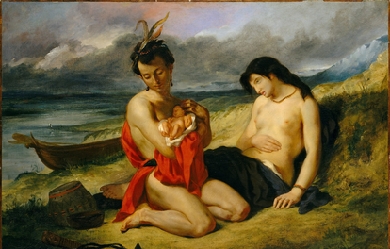
Paula Gunn Allen (October 24, 1939 – May 29, 2008) was a Native American poet, literary critic, activist, professor, and novelist. Of mixed-race European-American, Native American, and Arab-American descent, she identified with her mother's people, the Laguna Pueblo and childhood years. She drew from its oral traditions for her fiction poetry and also wrote numerous essays on its themes. She edited four collections of Native American traditional stories and contemporary works and wrote two biographies of Native American women.


